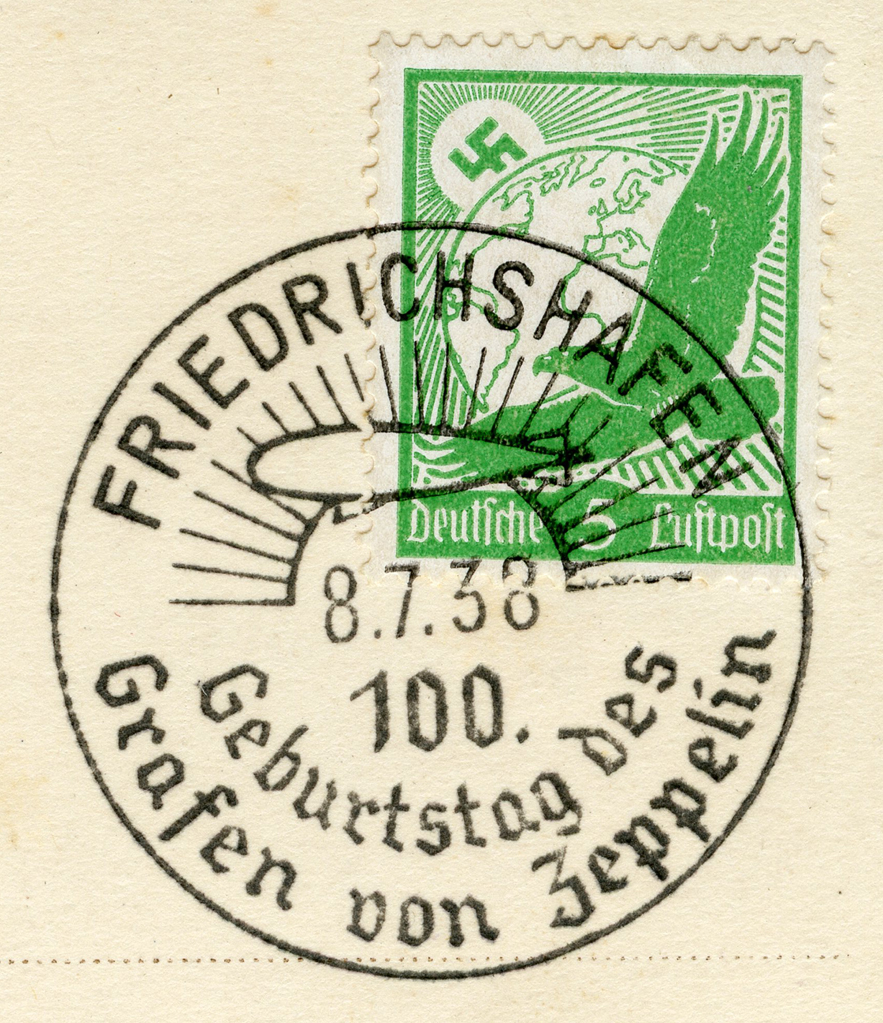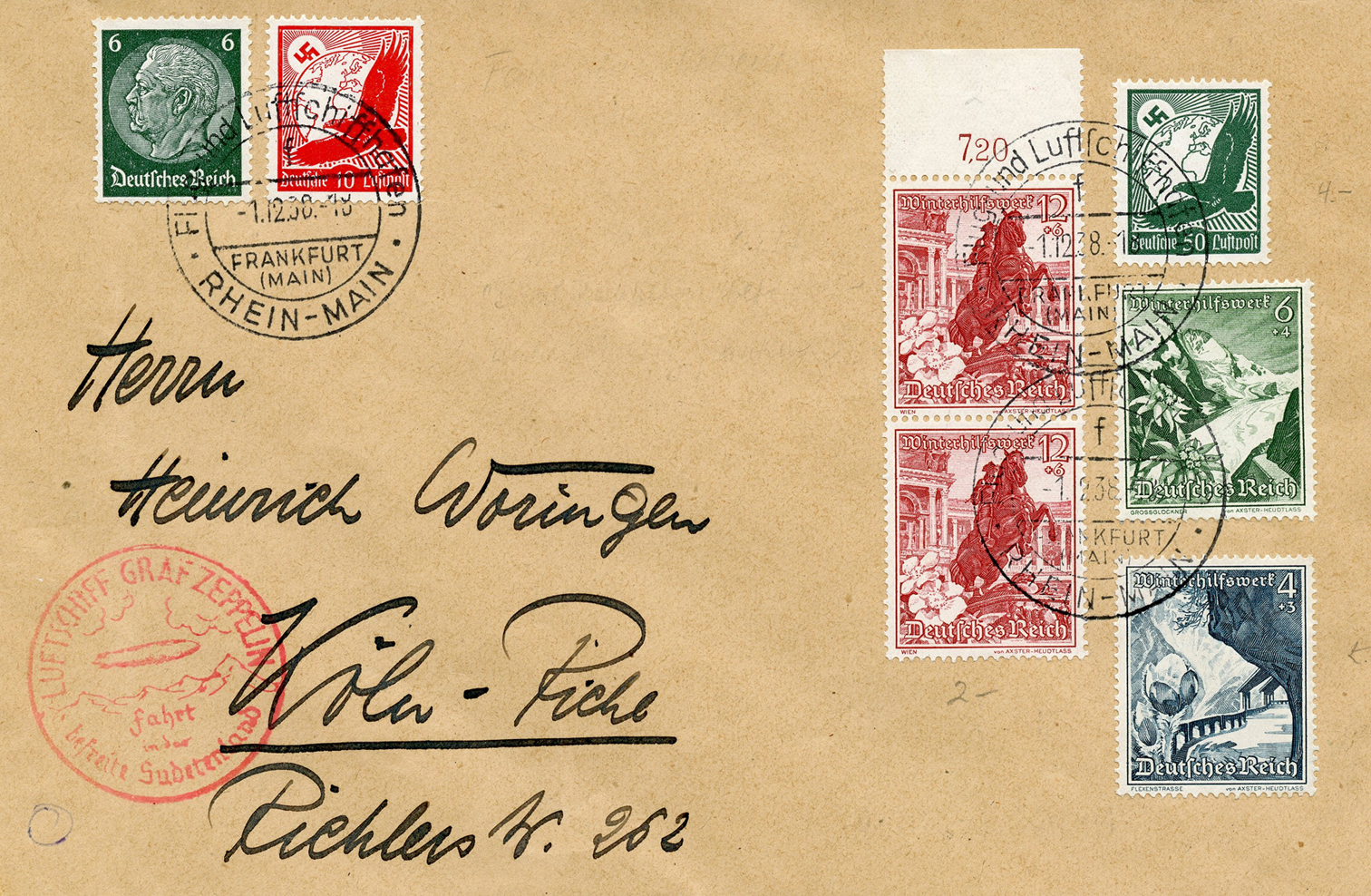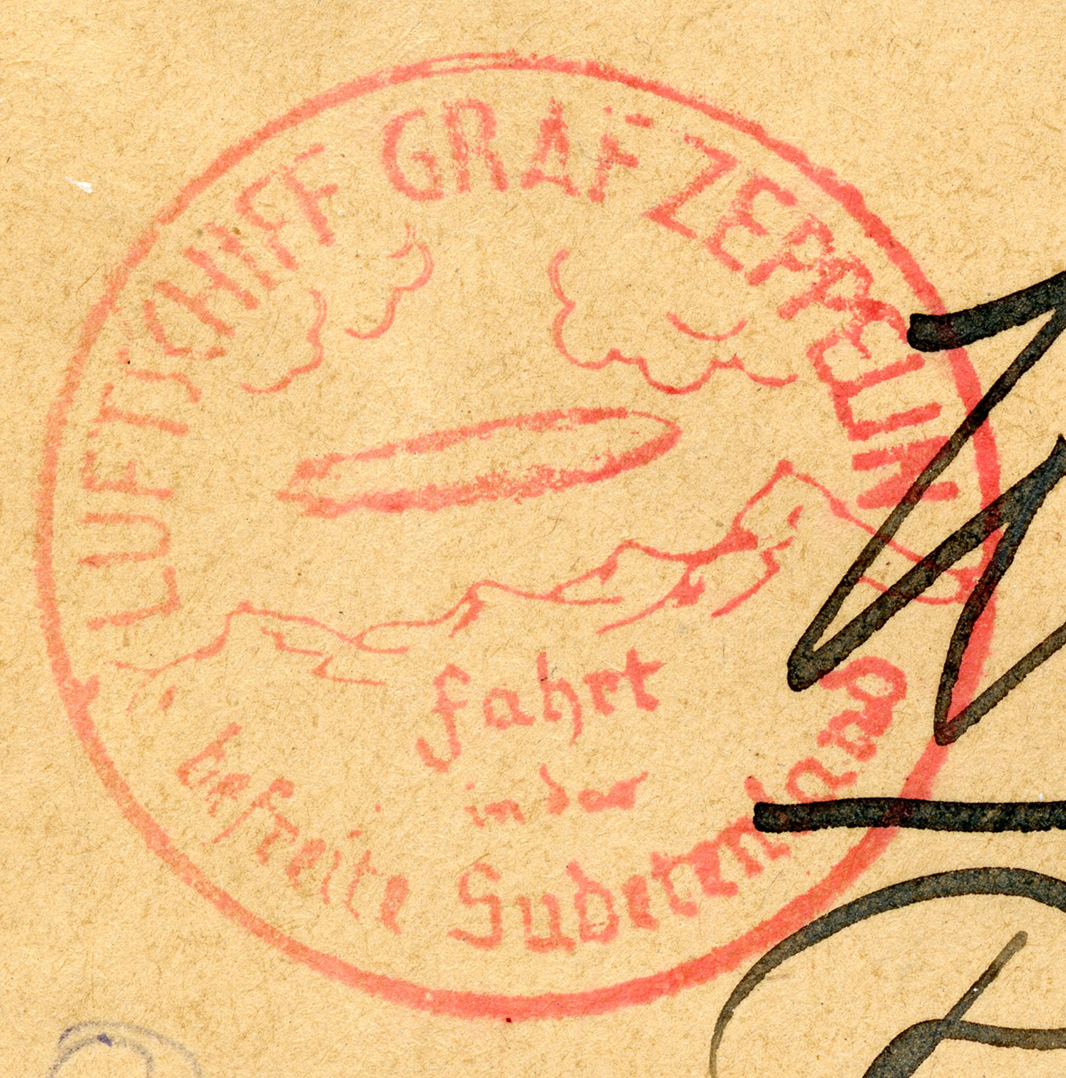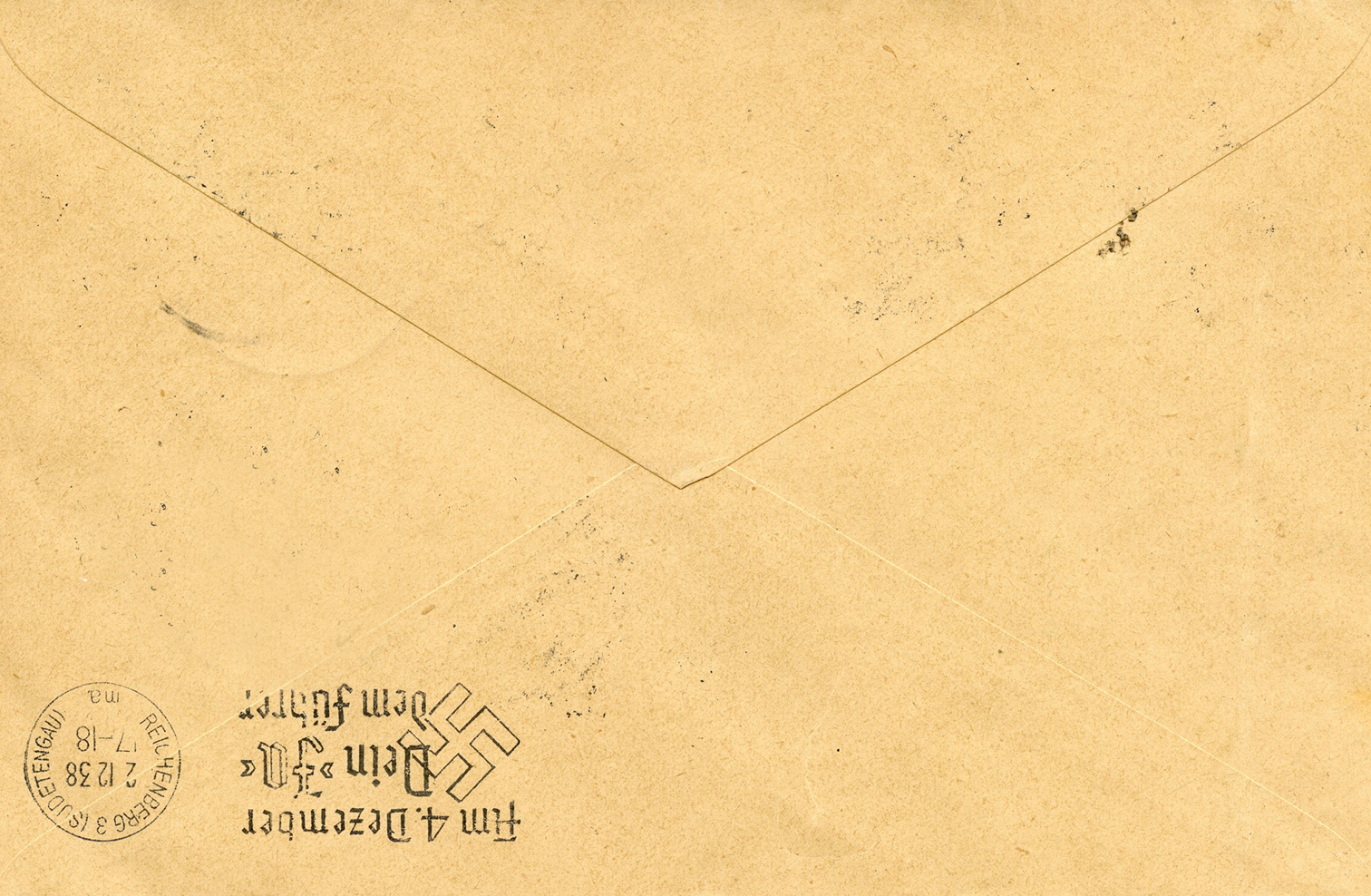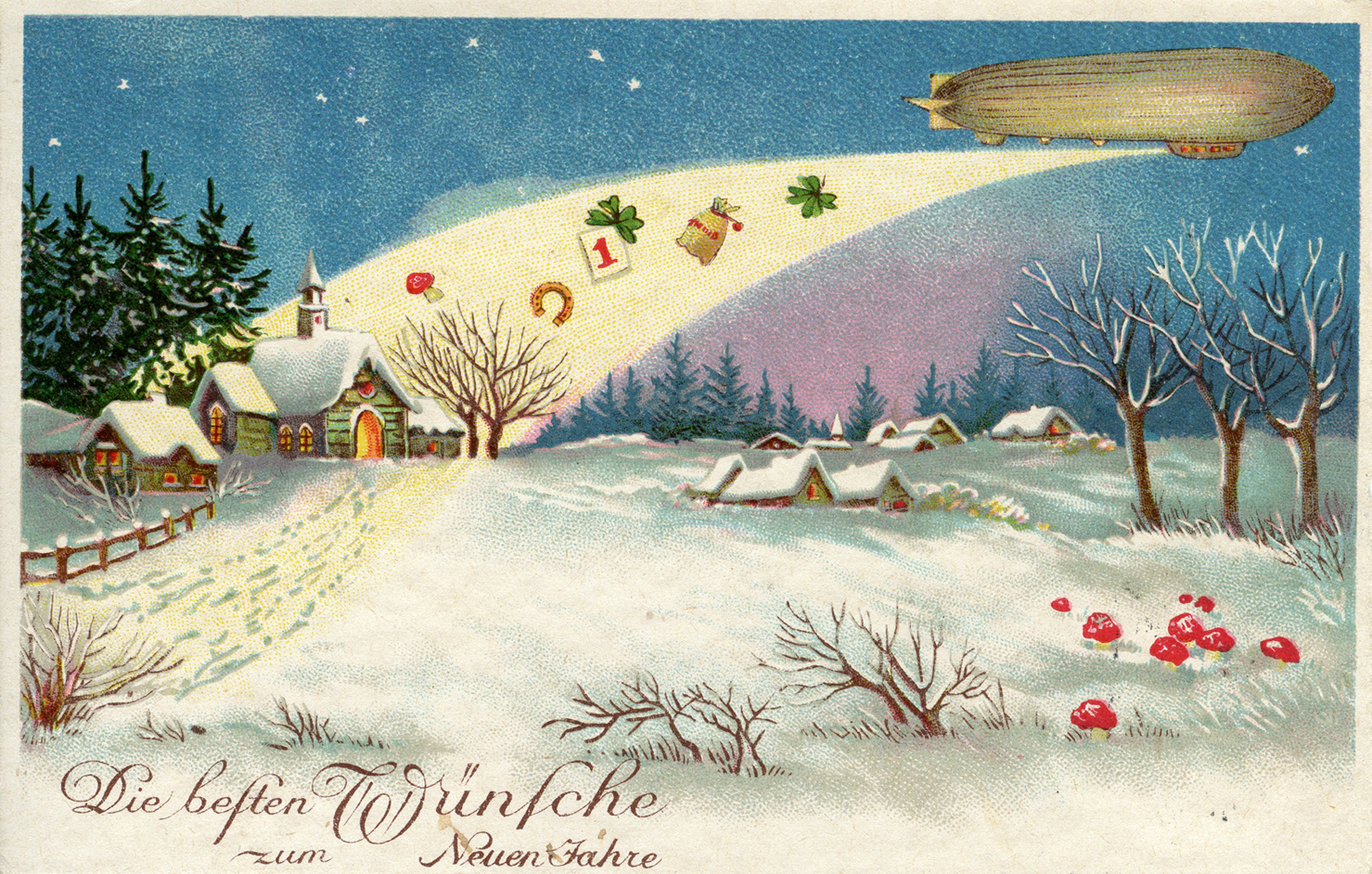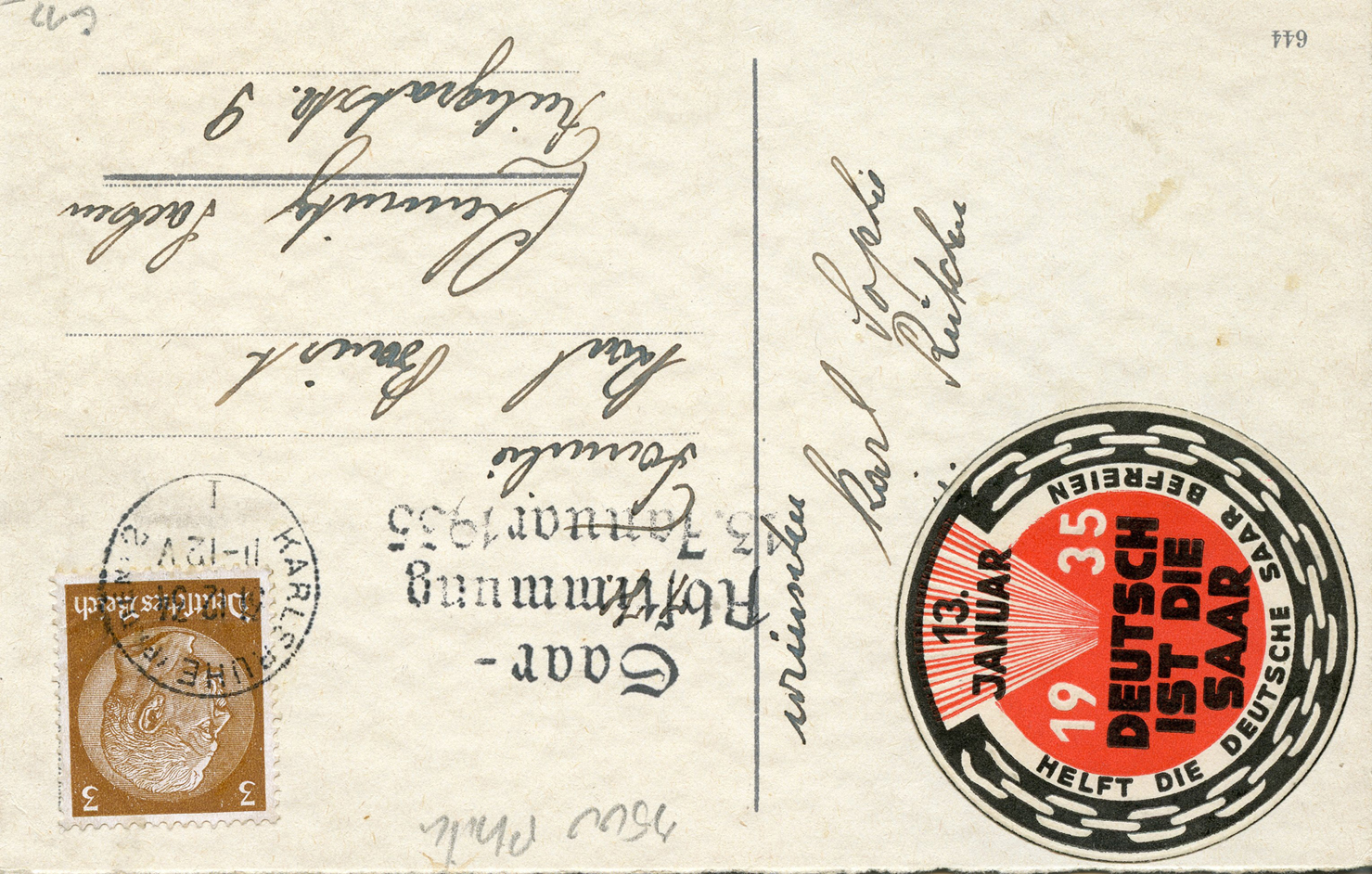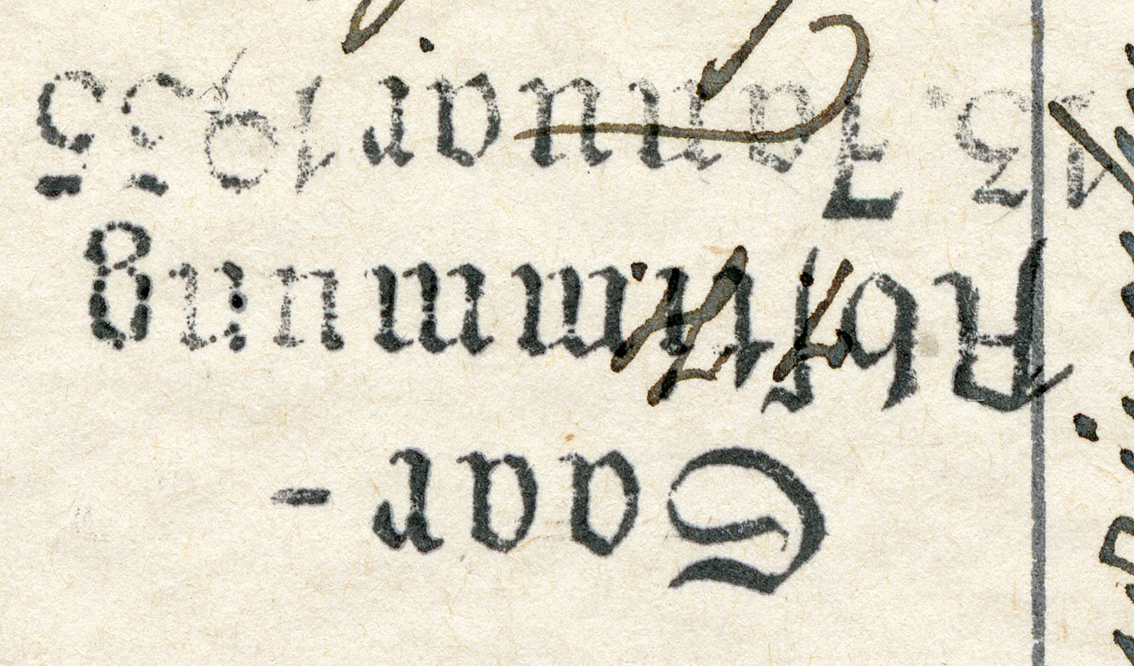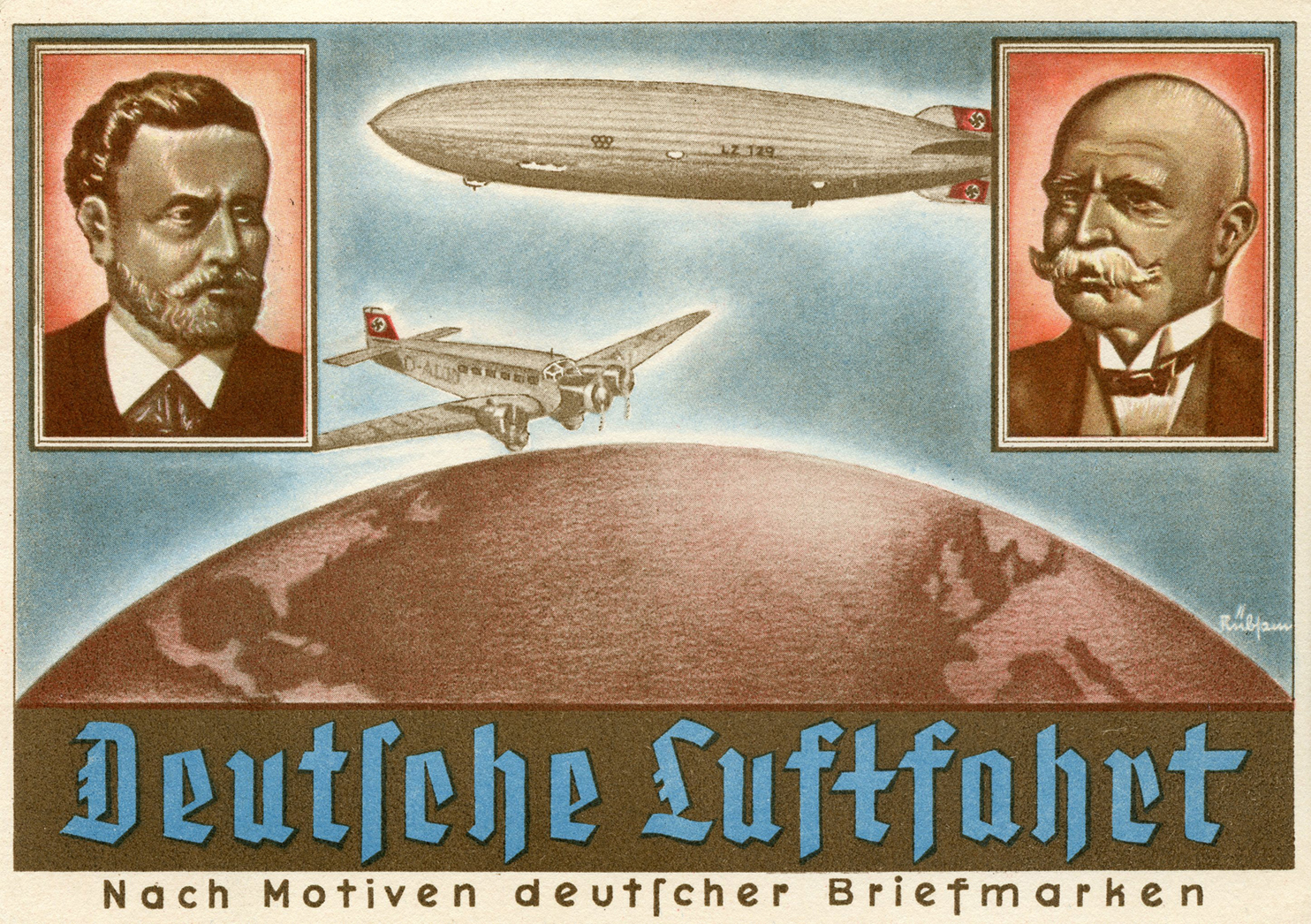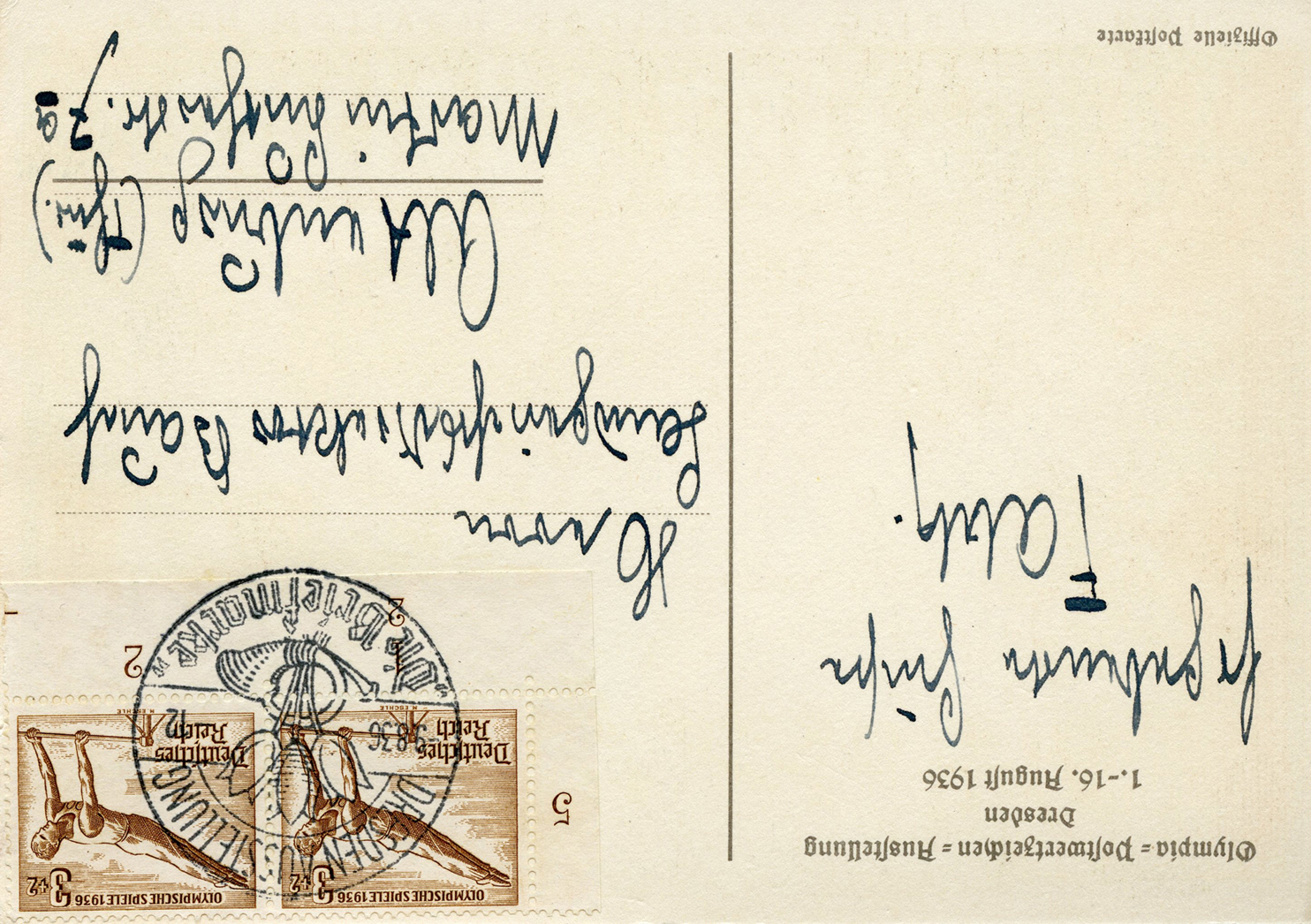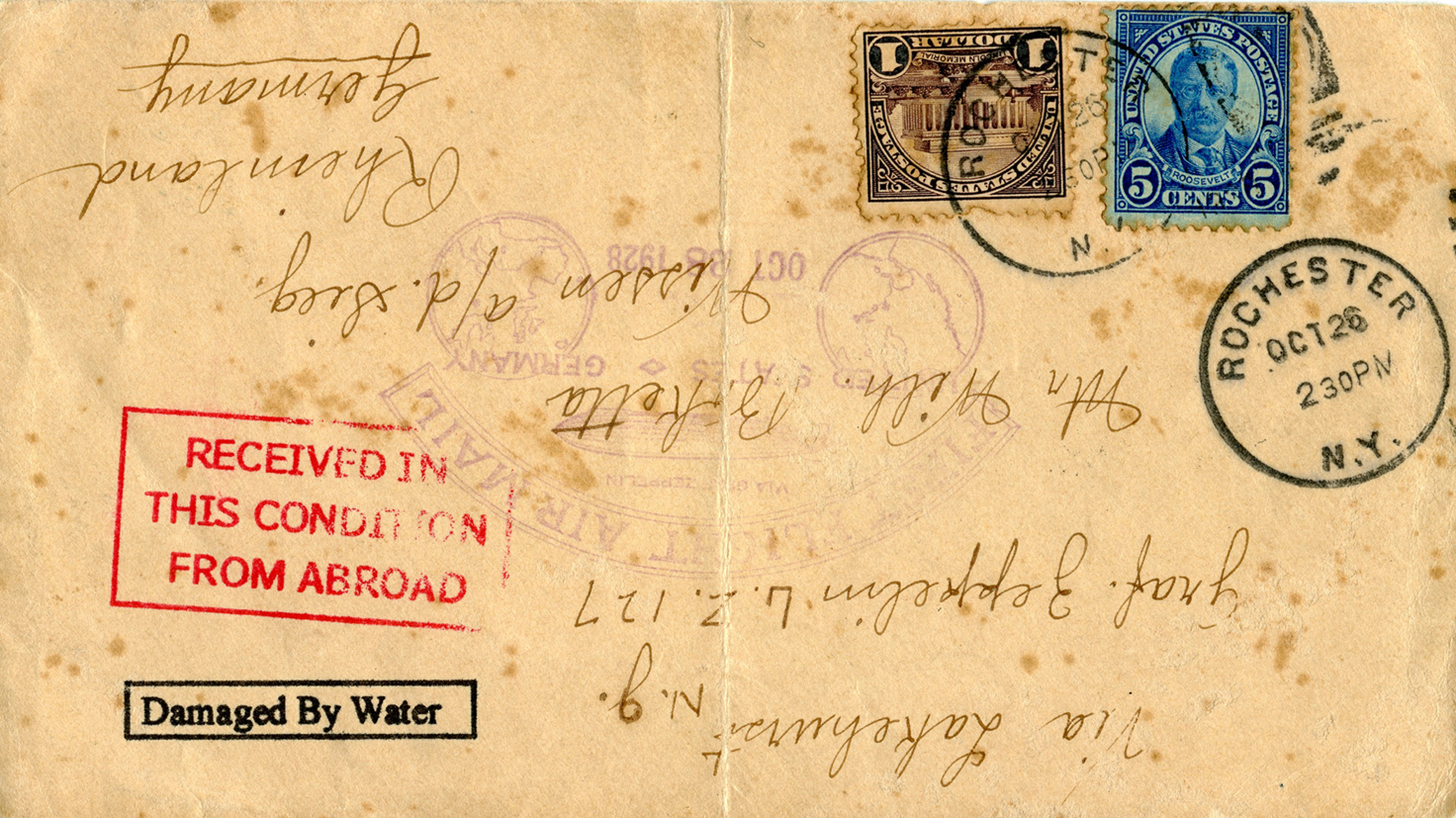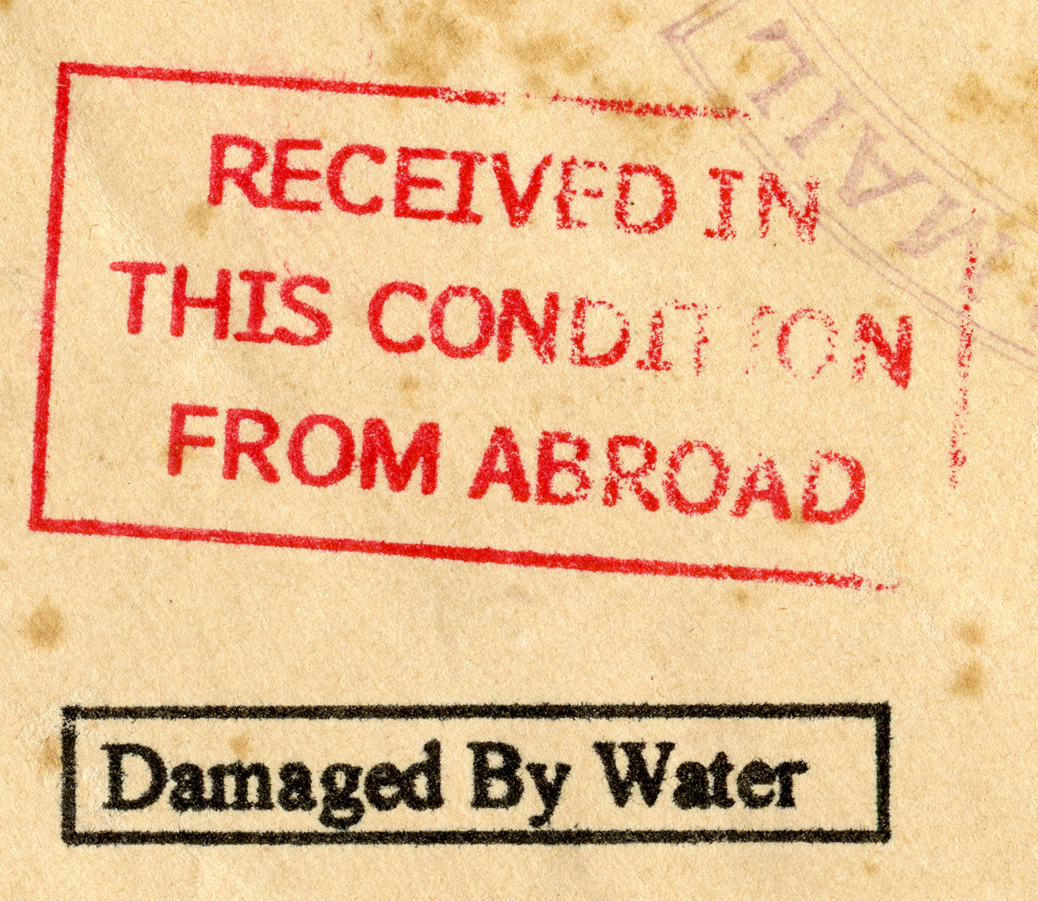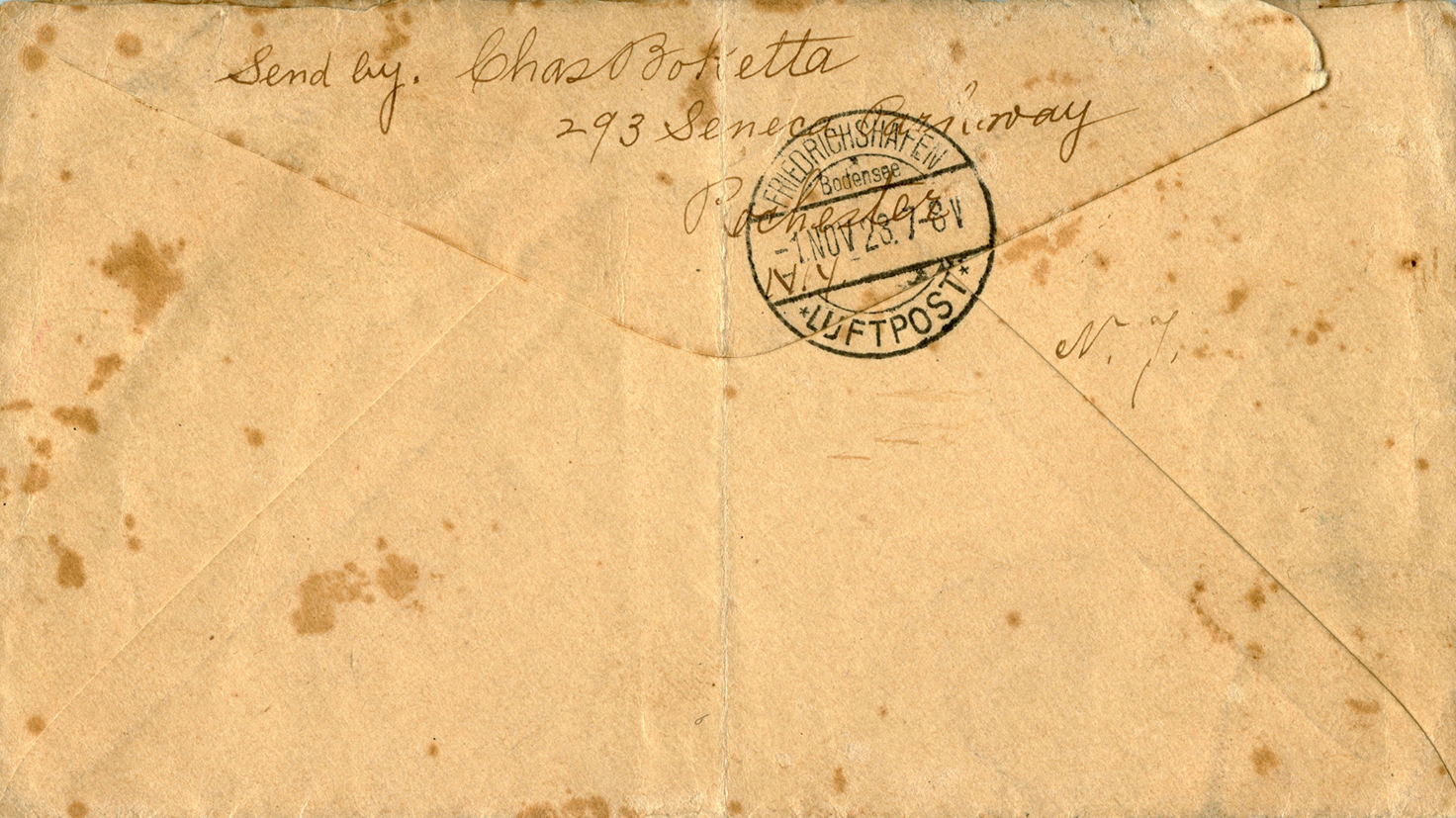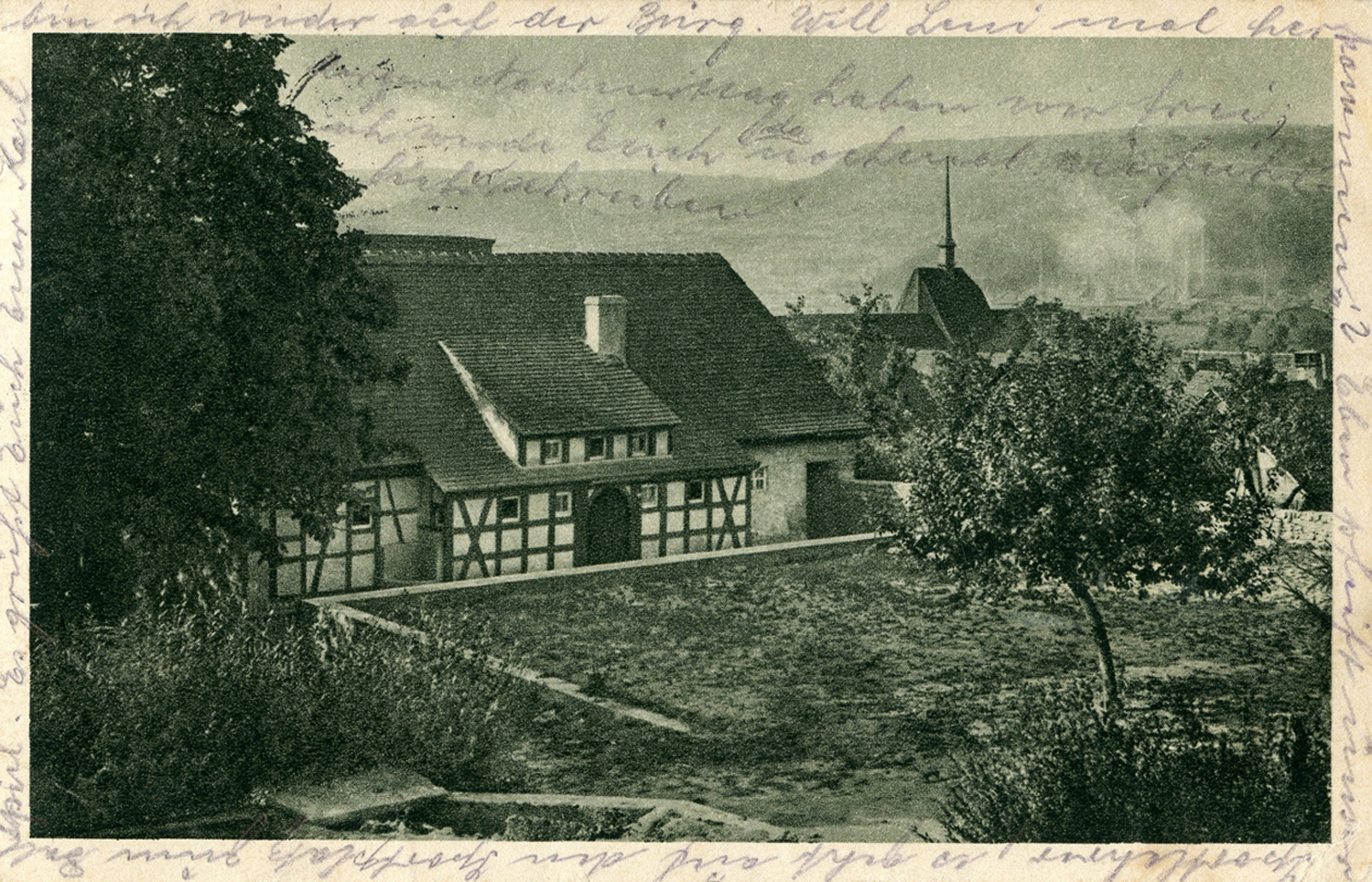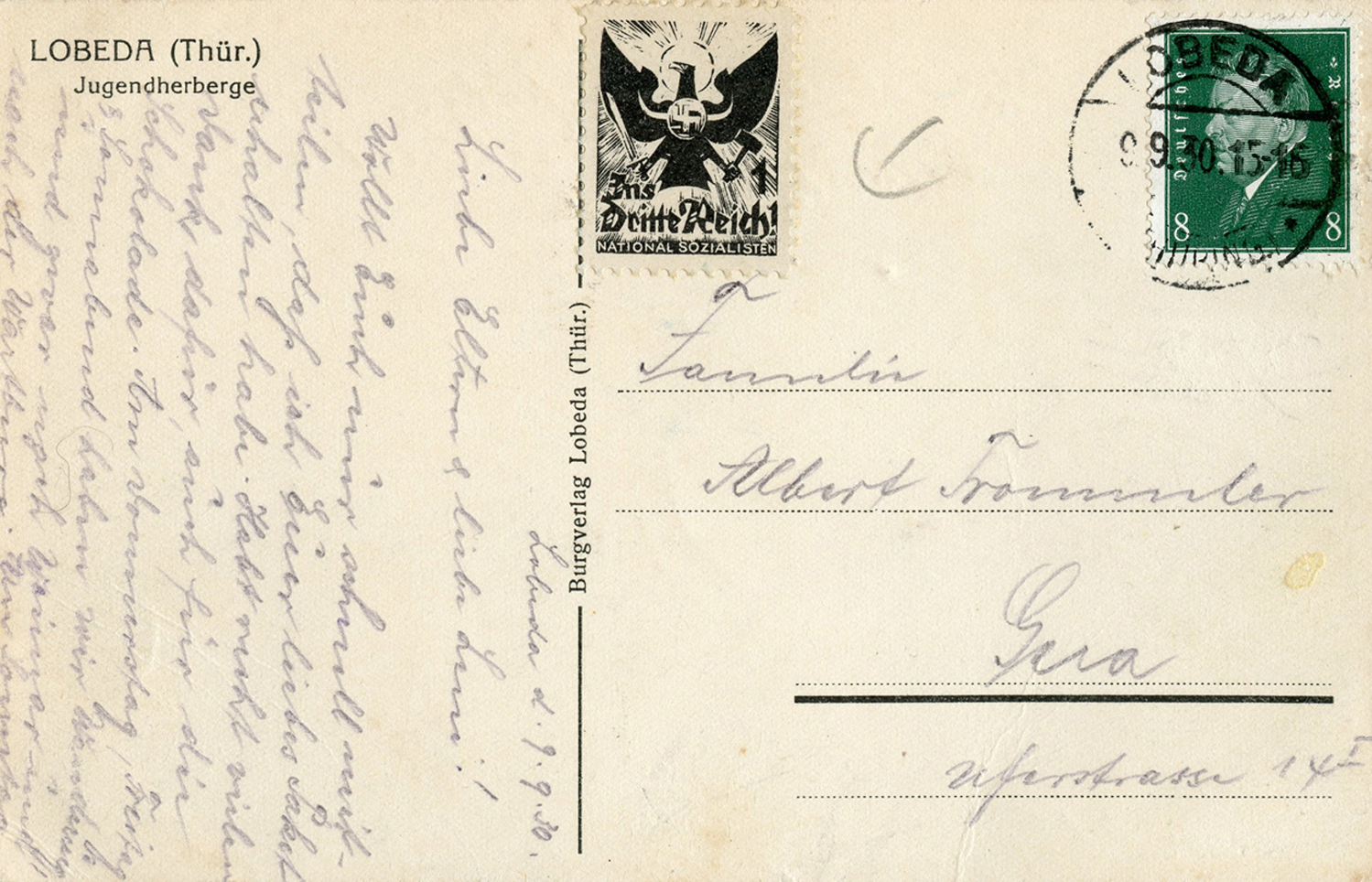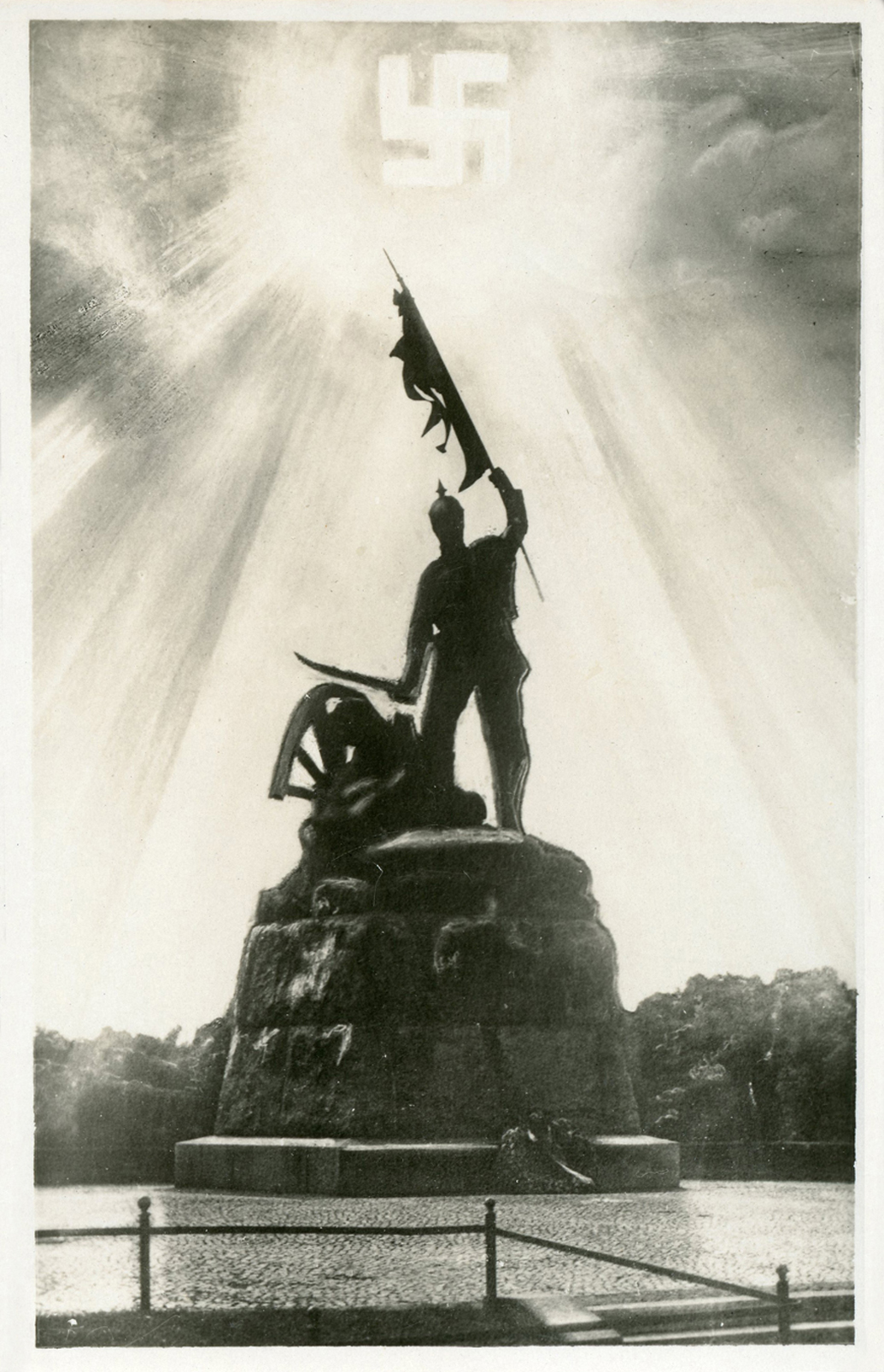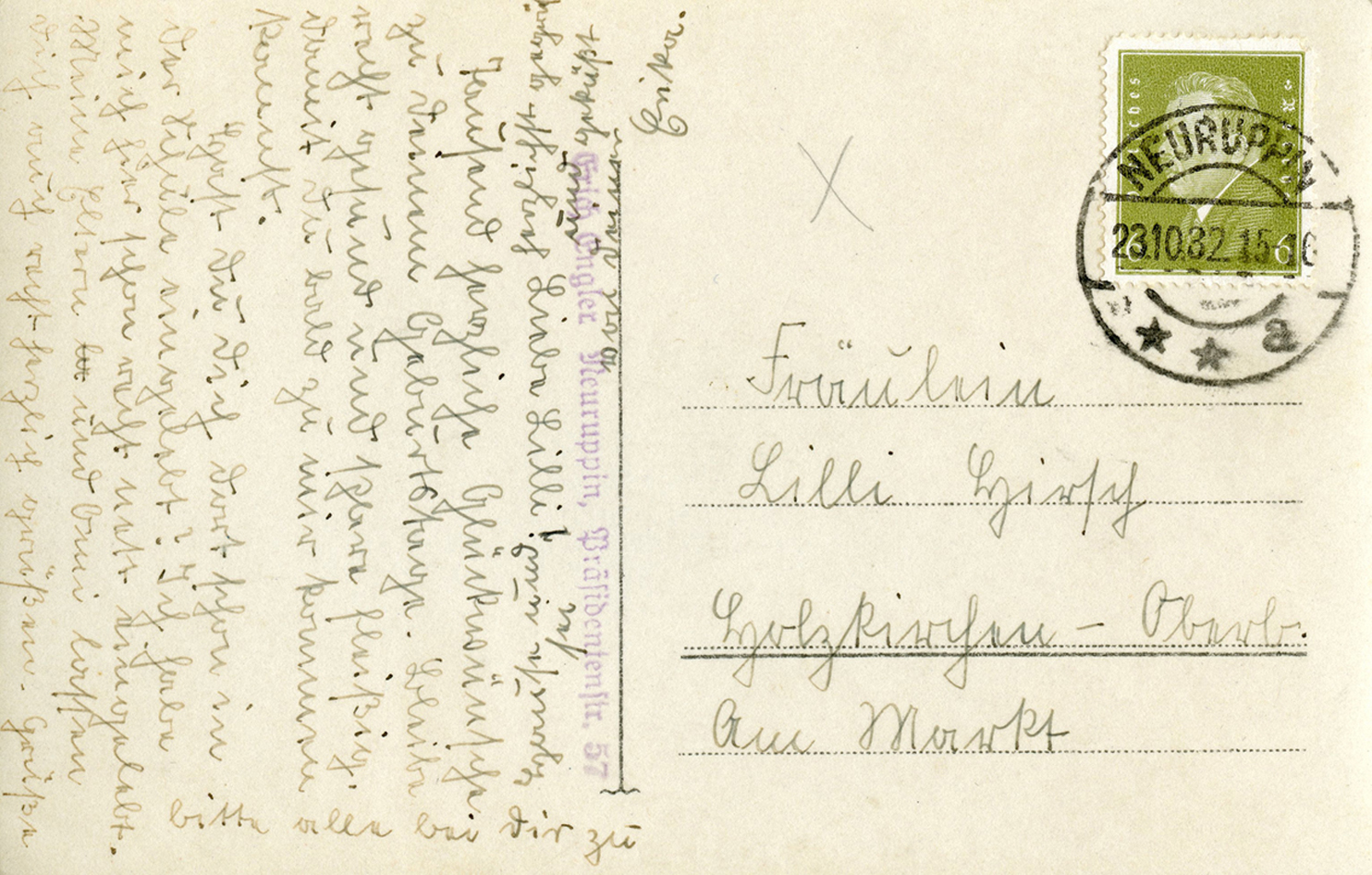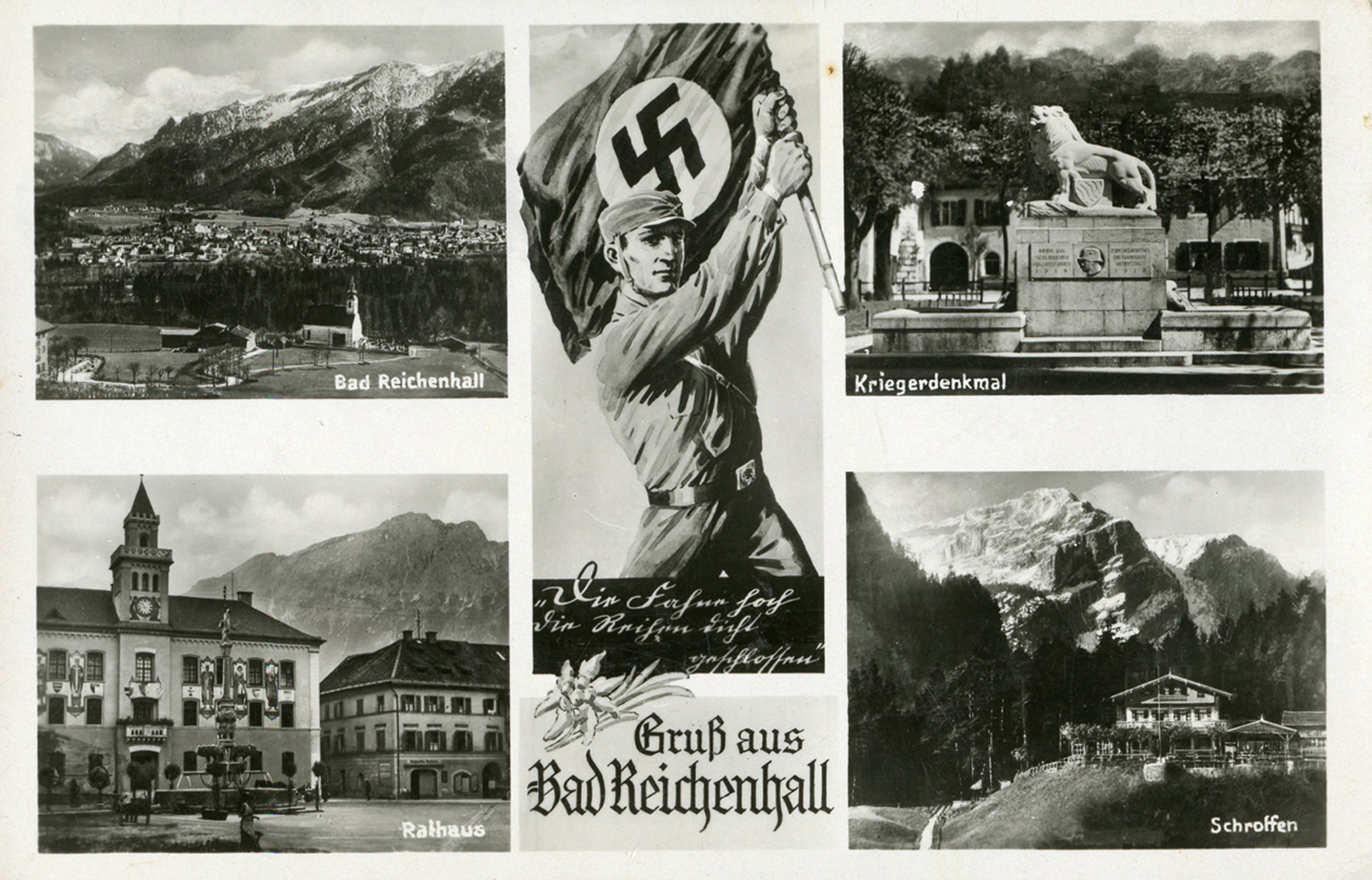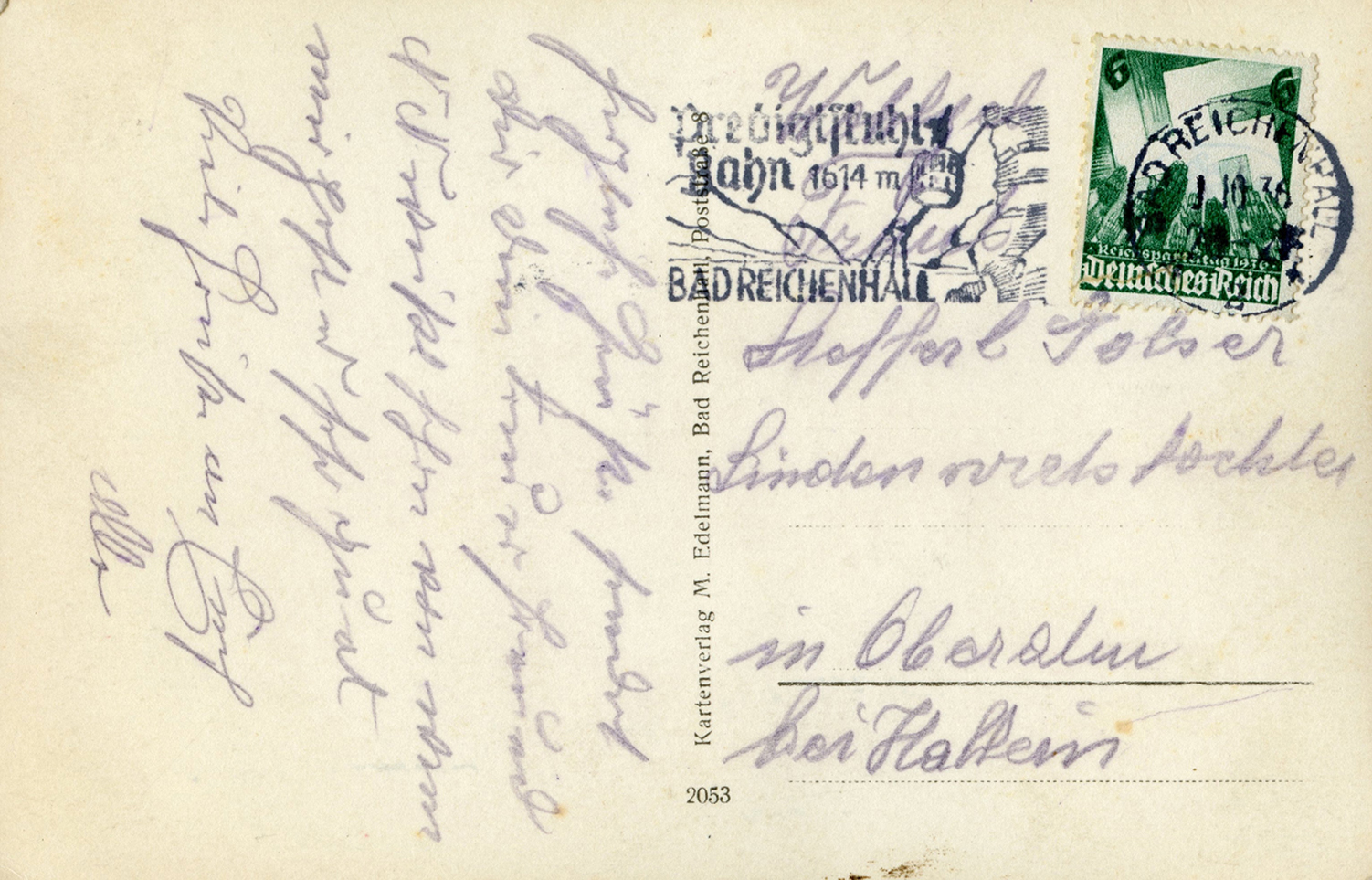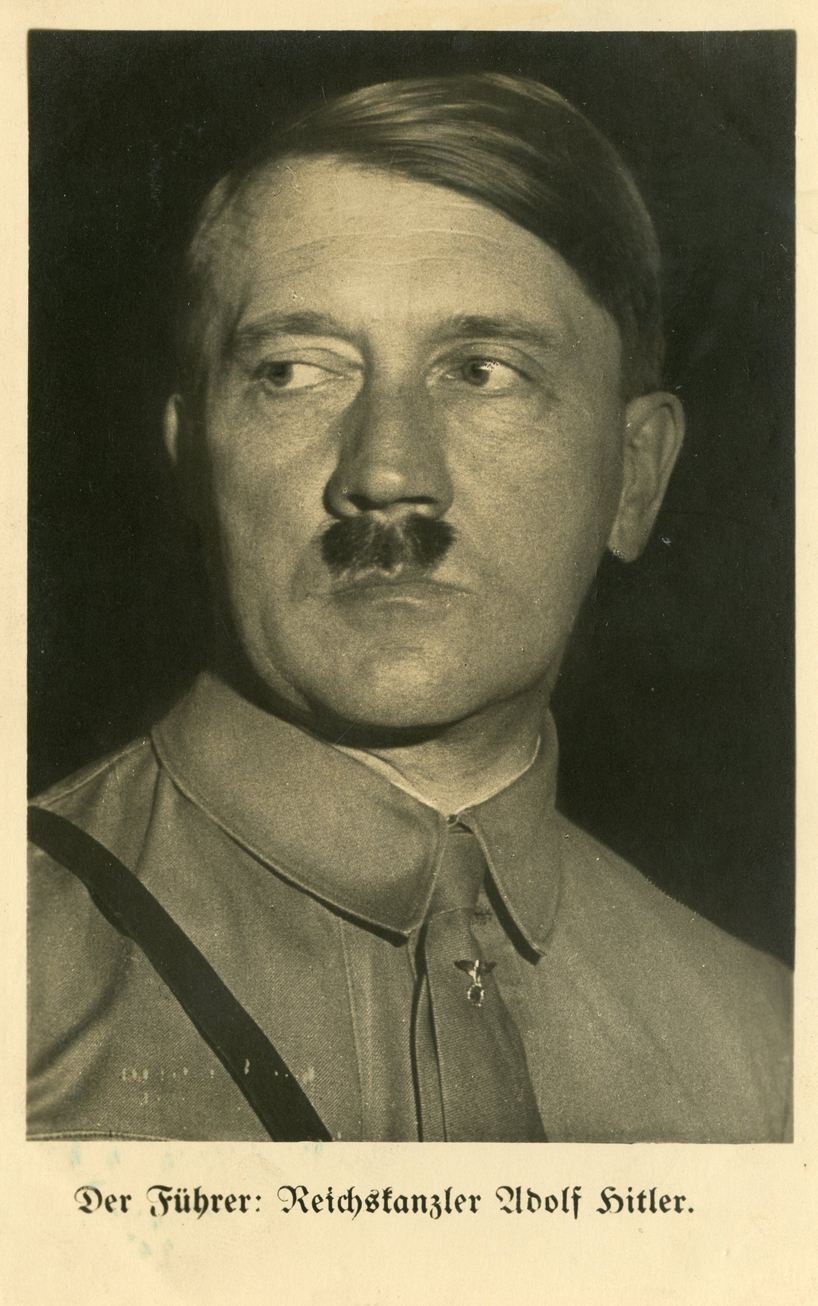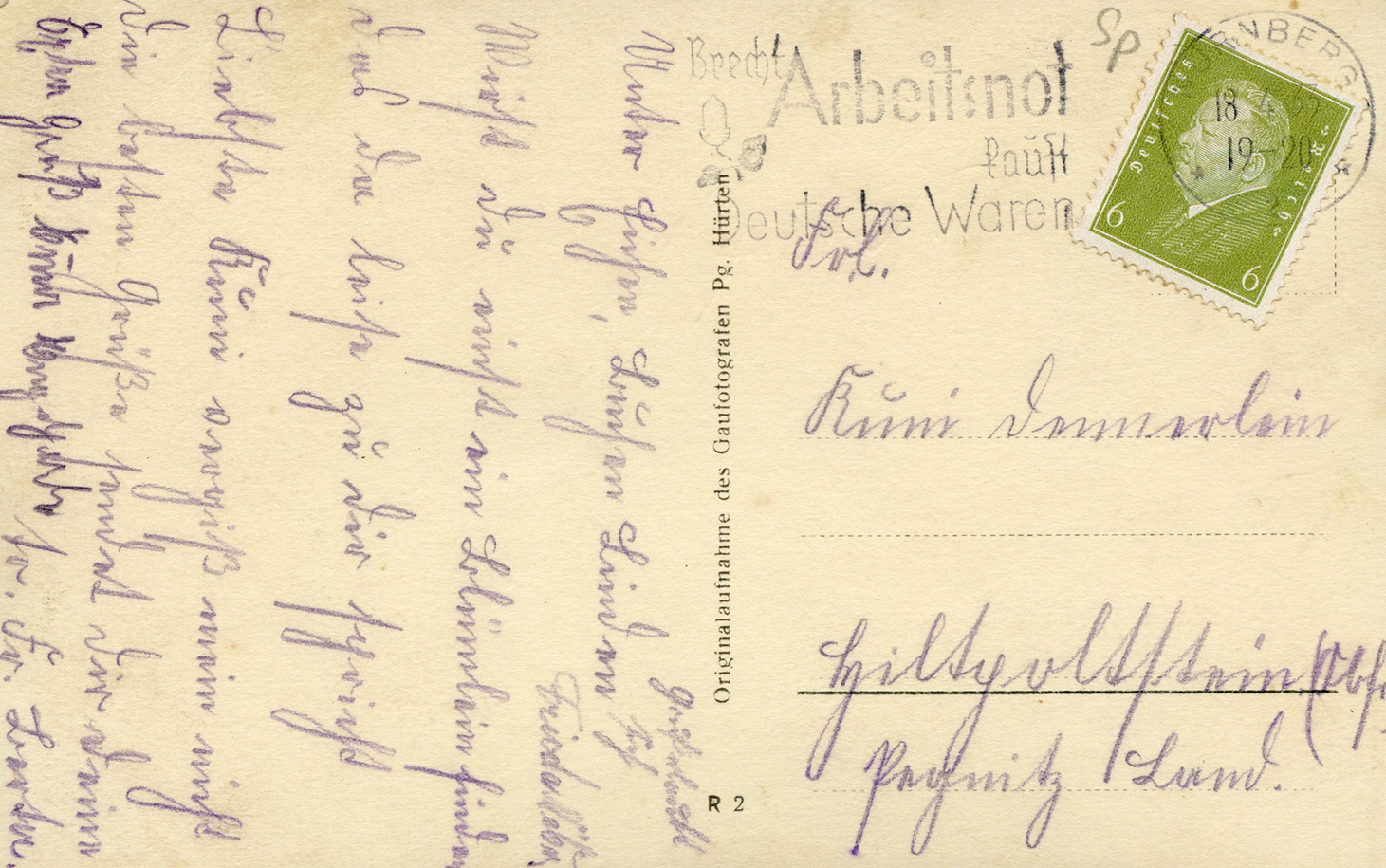

[Below: Prepaid postcards with Adolf Hitler stamps are usually a 'dime a dozen', although there are a few types which are actually pretty rare, this one being one of the rarest. These were for a pneumatic postal network of tubes, which could go up to 400 kilometers! It reached its greatest expansion in the Third Reich in 1940. It ceased to exist in 1963 in West Berlin and 1976 in East Berlin. It was many times more expensive to use the Rohrpost than regular mail, but it was a lot faster. Fascinating old technology!]

[Below: Close-up.]

[Below: Reverse of postcard. Exciting huh?]


[Below: Here is an envelope which advertises the Rohrpost, or pneumatic mail. It says: 'Rohrpost bringt Zeitgewinn' (Pneumatic tube saves time).]

[Below: Close-up.]


[Below: Here is an envelope that was used on the Rohrpost, canceled on April 25, 1939. It's route was through France 'via Le Havre par Normandie' (via Le Havre by Normandy) and to the USA.]


[Below: Here is an envelope which rode on the famed and tragic 'Hindenburg' airship. Airships were huge in the 1930s, nearly every country issued special postage stamps specifically for postage aboard them. Most of these stamps and envelopes are quite expensive today and very desirable.]

[Below: Reverse. The Hindenburg would crash roughly a year from the time this letter was sent, on May 6, 1937. Aboard the Hindenburg were approximately 17,000 pieces of mail on its final voyage. Only 176 pieces of mail, which were kept in a protective container survived the crash.]


[Below: Another Hindenburg airship envelope from July 6, 1936. I wonder what "Driftways" is?]

[Below: Reverse.]


[Below: Another Hindenburg airship envelope. This one is from October 7, 1936. ]

[Below: Close-up.]

[Below: Close-up.]

[Below: Reverse.]


[Below: Another Hindenburg airship envelope. This one is from August 5, 1936. ]

[Below: Close-up. What is it with these postage stamps that they are always stained? Acid gum? Acid gum has been known on German stamps before, but it literally eats the paper.]

[Below: Close-up.]

[Below: Reverse.]


[Below: A large Hindenburg envelope sent from Frankfurt, Germany to Boston, USA.]

[Below: Envelope reverse.]


[Below: Another airship envelope. This one is from July 31, 1929. I wonder what "% Plain Dealer" means? I looked it up and apparently 'plain dealer' means 'Someone who interacts or does business straightforwardly and honestly'.]

[Below: Close-up.]

[Below: Close-up.]

[Below: Close-up.]


[Below: Another Hindenburg airship envelope, this time from the USA. This one is from May 11, 1936. It's interesting that the sender gave an incomplete address and therefore it was returned to sender.]

[Below: Close-up.]

[Below: Reverse. This has various receiving stamps and a cool ink stamp of the Hindenberg. The strange green bordered stamp says 'Unbekannt/inconnu' which means 'unknown'. I've oddly never seen the post office use such a stamp. It's interesting that there are Frankfurt cancels here, it was addressed to 'Frankford', which apparently doesn't exist, so they sent it to Frankfurt. Frankfurt couldn't deliver it because there was no street address. At the start of WWII Frankfurt had a population of 553,000. So obviously they didn't know where Mr. Levy's house was, which they used to be able to do in small towns. I've seen lots of envelopes addressed with just a name and a city and state. Now here is another angle: note that the sender is William Levy... but look on the back of the envelope to see who sent it... William Levy. It looks like he sent it to himself, but perhaps gave a bad address in order for it to be sent back. Why would he do this, you ask? To get not only a Hindenburg cancel, but also get the 'return to sender' and the strange German 'unknown' stamp, etc. All of this would make the envelope more valuable. Think of it this way, if 1,000 of these were sent via the Hindenburg, how many of them would be sent back? Probably just a small handful, which would make the sent back ones pretty rare. Why does any of this matter? Well stamp collectors are very meticulous about details, some more than others.]

[Below: Close-up. Note the airship says D-LZ 129, this is the code for Hindenberg.]


[Below: Many countries had their own airship stamps/service, this one is from Hungary. March 27, 1931.]

[Below: Close-up.]

[Below: Close-up.]


[Below: This airship envelope is from Paraguay and is from July 10, 1936.]

[Below: Close-up.]

[Below: Reverse.]


[Below: Not an airship envelope, but the cancel features one. This is an airmail envelope, canceled on May 3, 1935 and sent to Brazil.]

[Below: Close-up.]

[Below: Reverse.]


[Below: Here is special commemorative sheet (July 8, 1938) celebrating the 100th birthday of Ferdinand Zeppelin. This sheetlet was produced by the Strength Through Joy organization.]

[Below: Close-up. Here are two German stamps also celebrating the 100th birthday of Ferdinand Zeppelin.]


[Below: This postcard, postmarked January 8, 1938, is in German and English. It celebrates Day of the Stamp and also shows the Hindenburg tragedy, with a pheonix rising from its ashes.]


[Below: Postcard honoring the 100th birthday of Herr Zeppelin, postmarked July 8, 1938.]
[Below: Close-up.]

[Below: This envelope, postmarked July 30, 1939, was sent to Dresden from Frankfurt.]
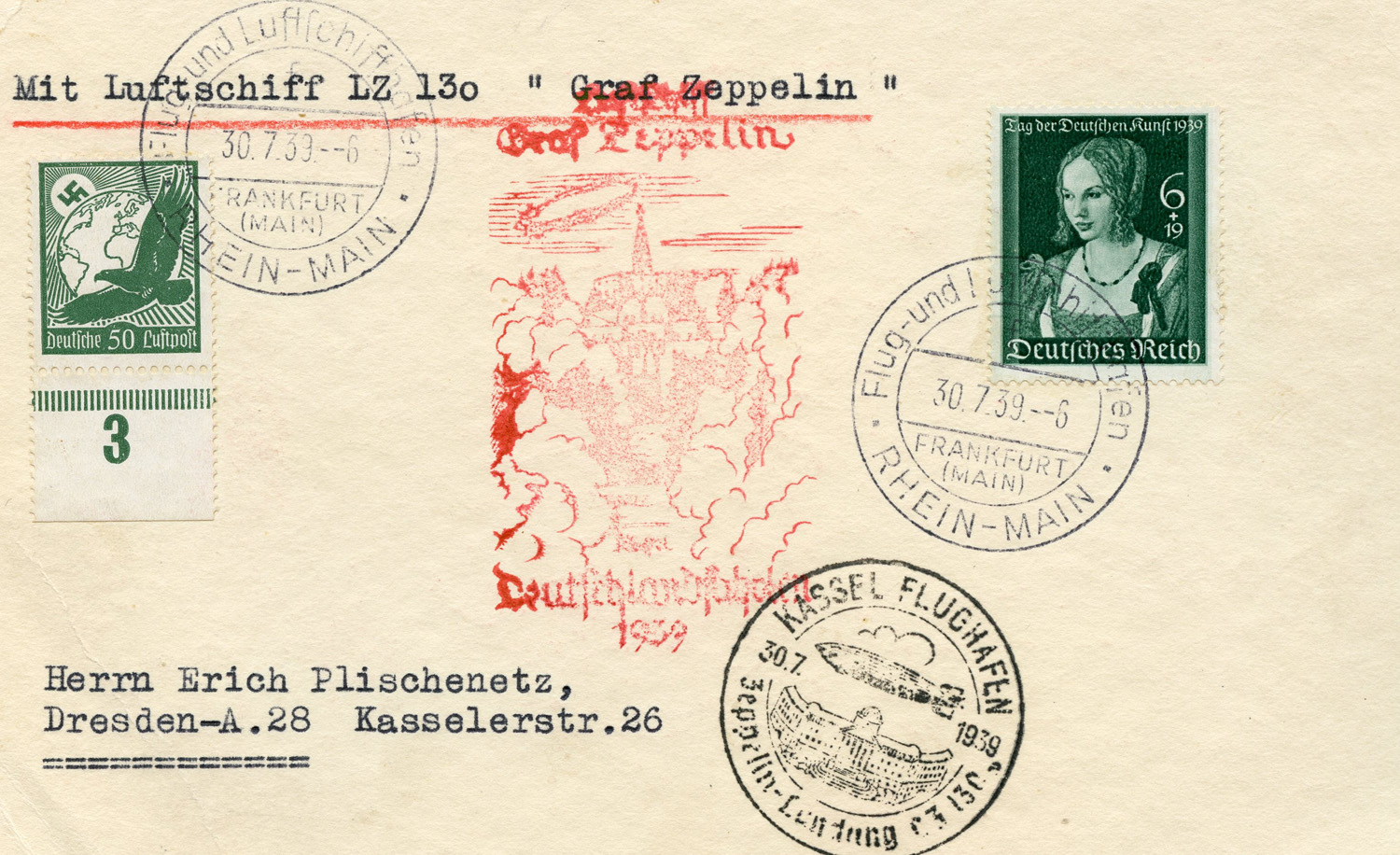
[Below: Close-up.]
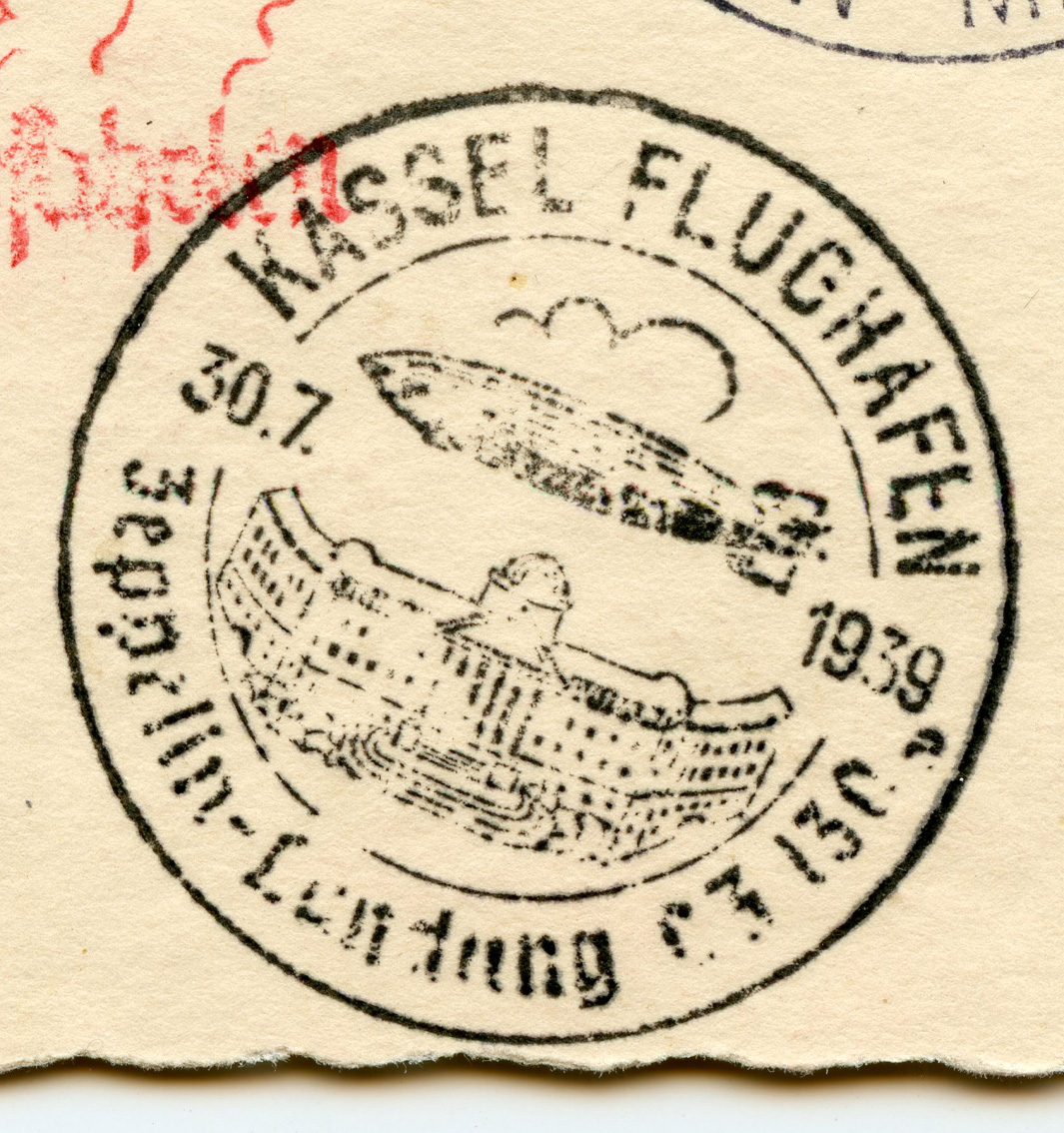
[Below: Close-up.]
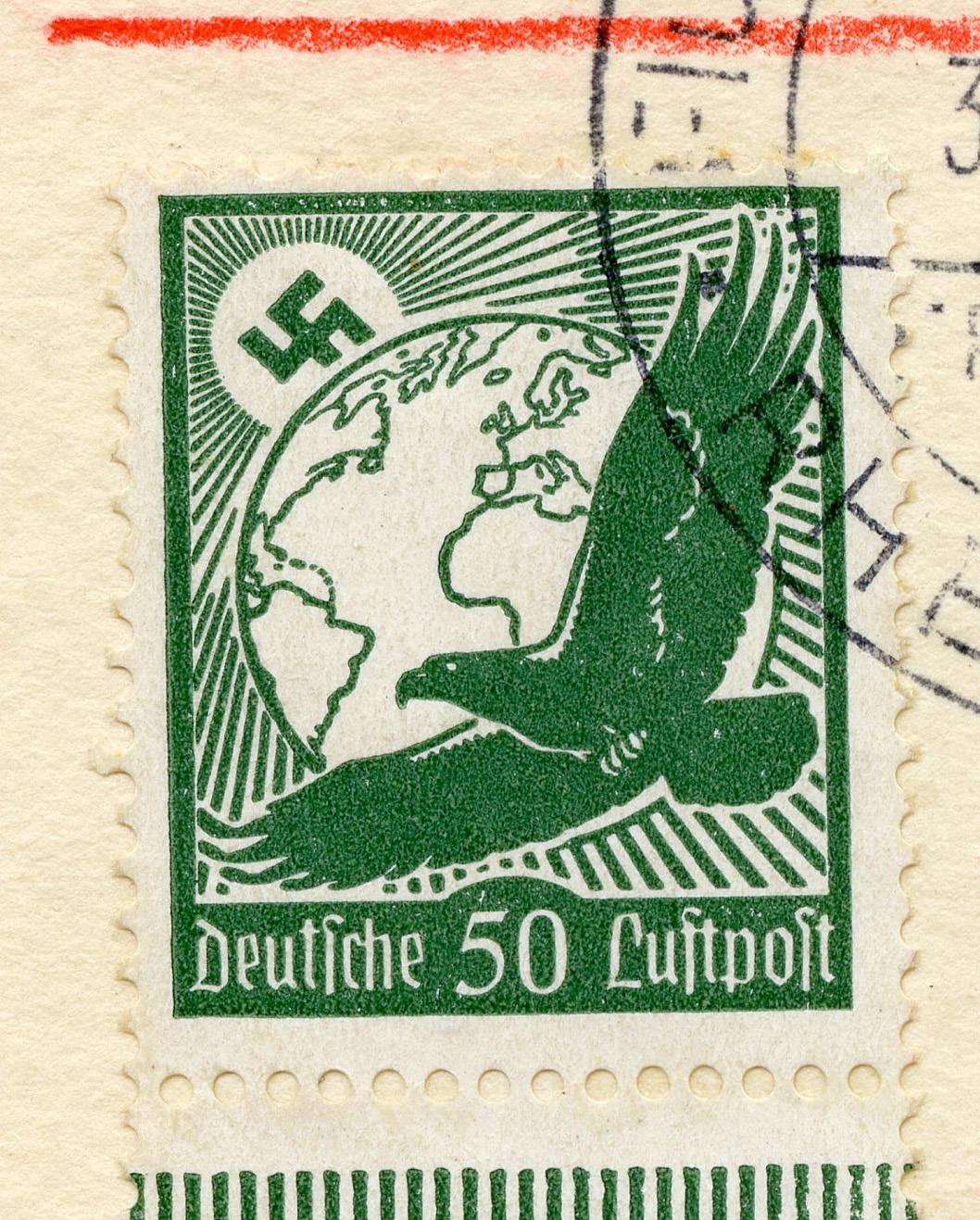

[Below: This postcard, postmarked December 1, 1938, was sent on a special Zeppelin flight over the Sudetenland.]
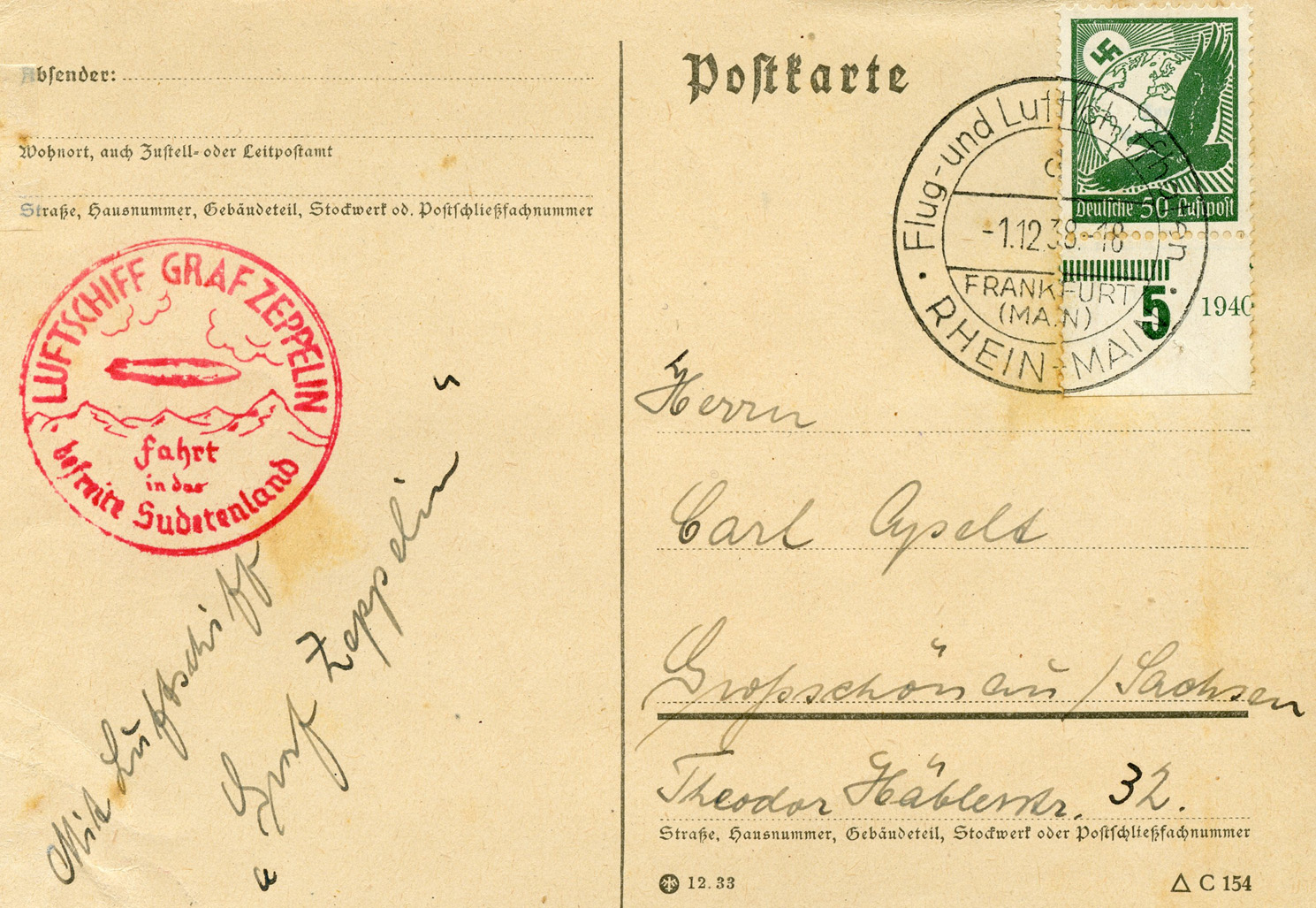
[Below: Close-up.]
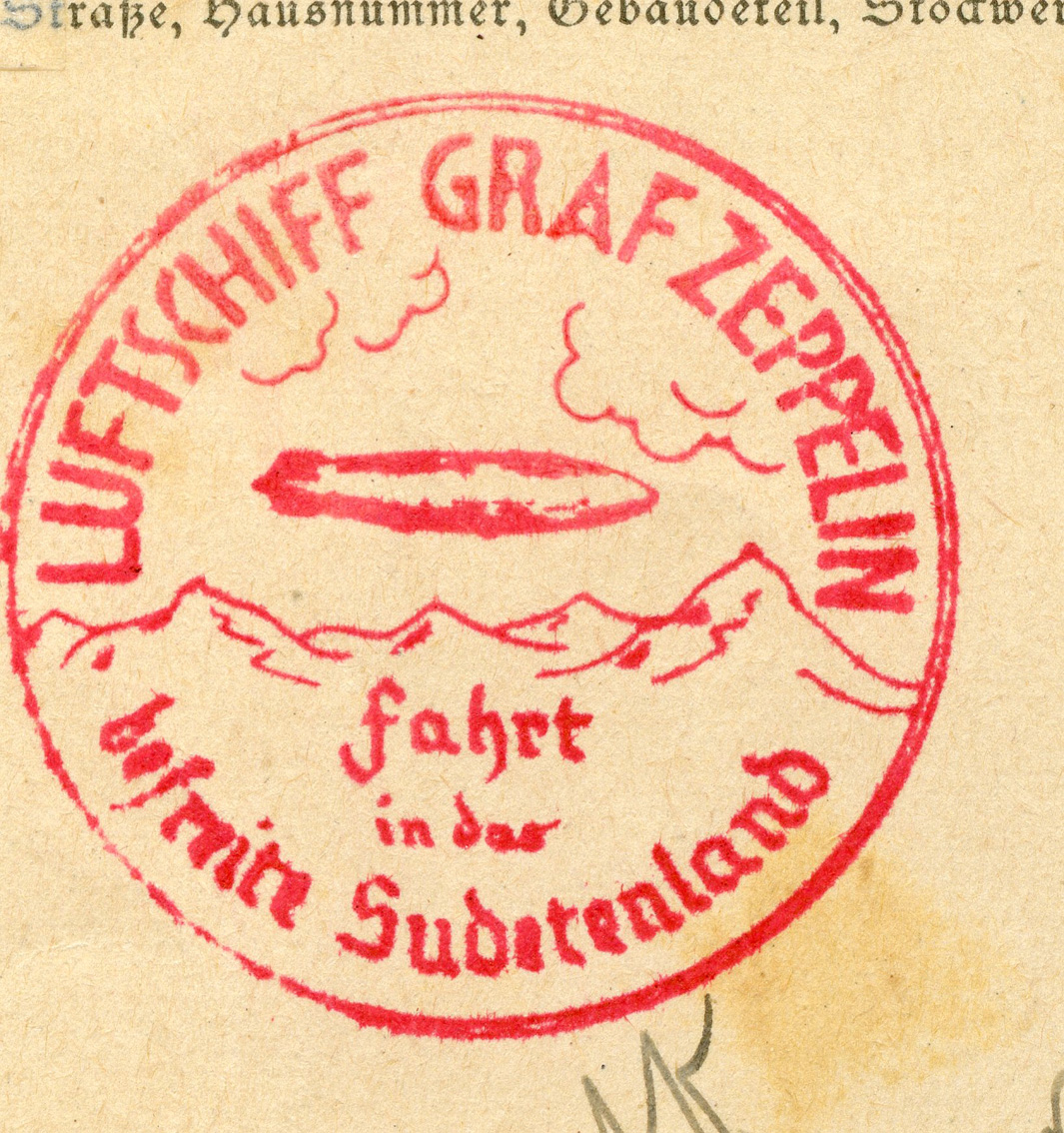
[Below: Postcard reverse.]
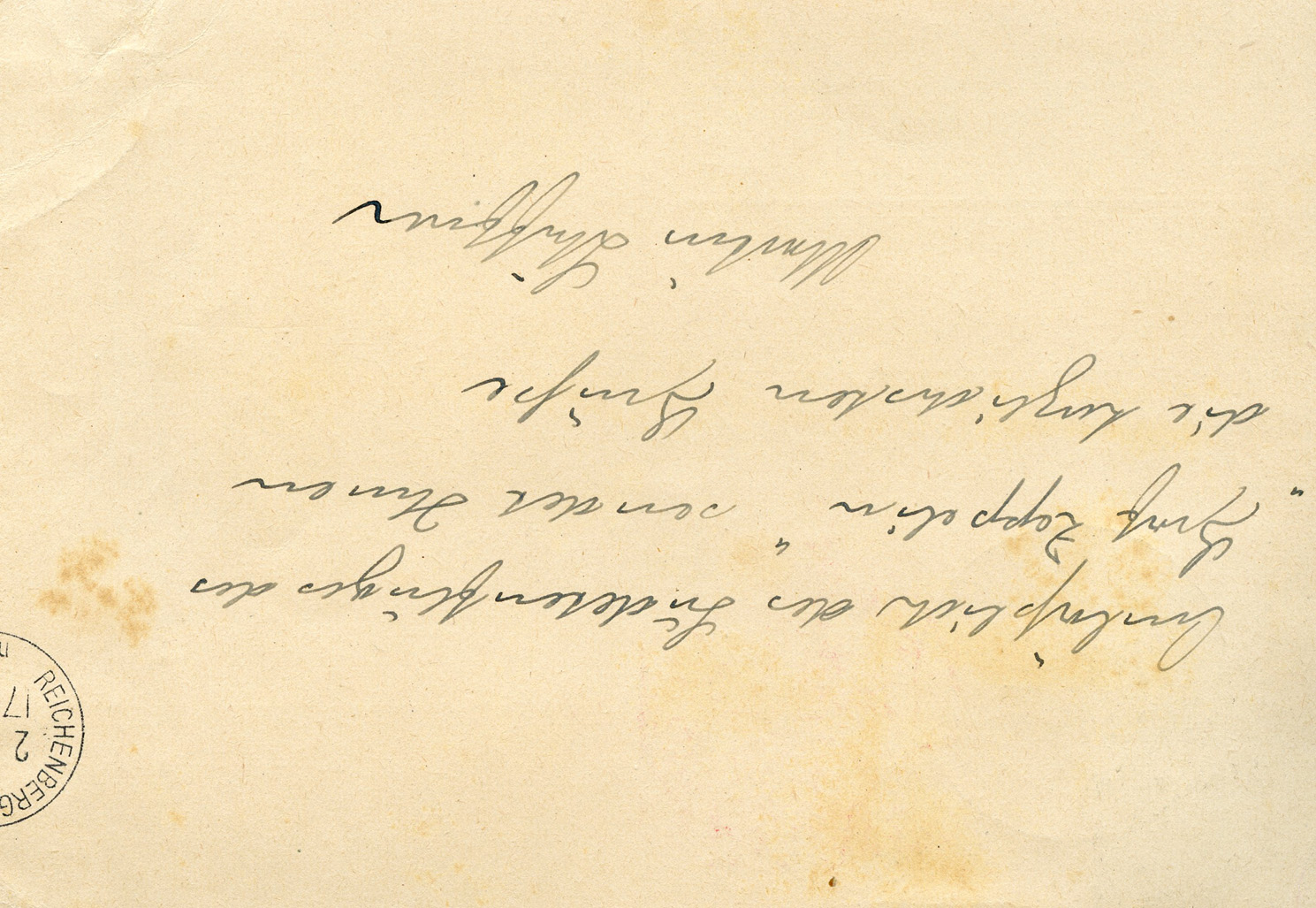

[Below: This large envelope, postmarked in Frankfurt on December 1, 1938, was sent on a special Zeppelin flight over the Sudetenland.]
[Below: Zeppelin cancel.]
[Below: Reverse. This shows a Reichenberg receival postmark from December 2, 1938. Wow, one day mail and on a Zeppelin. Now it takes a week for 2-3 day mail. This also has an Anschluss postmark for Austria.]

[Below: This postcard also has a special postmark from a Zeppelin flight over the Sudetenland.]
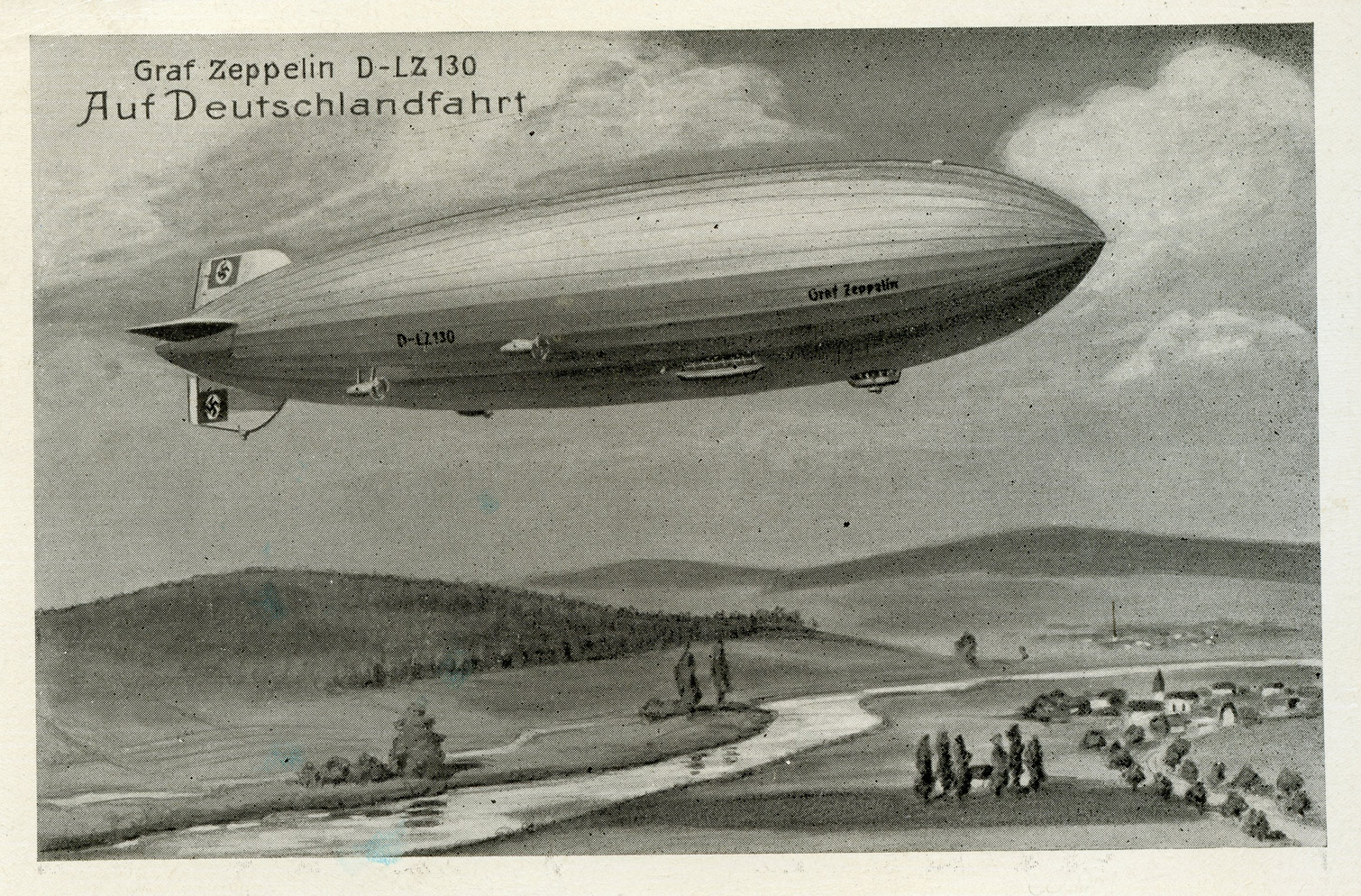
[Below: Reverse]
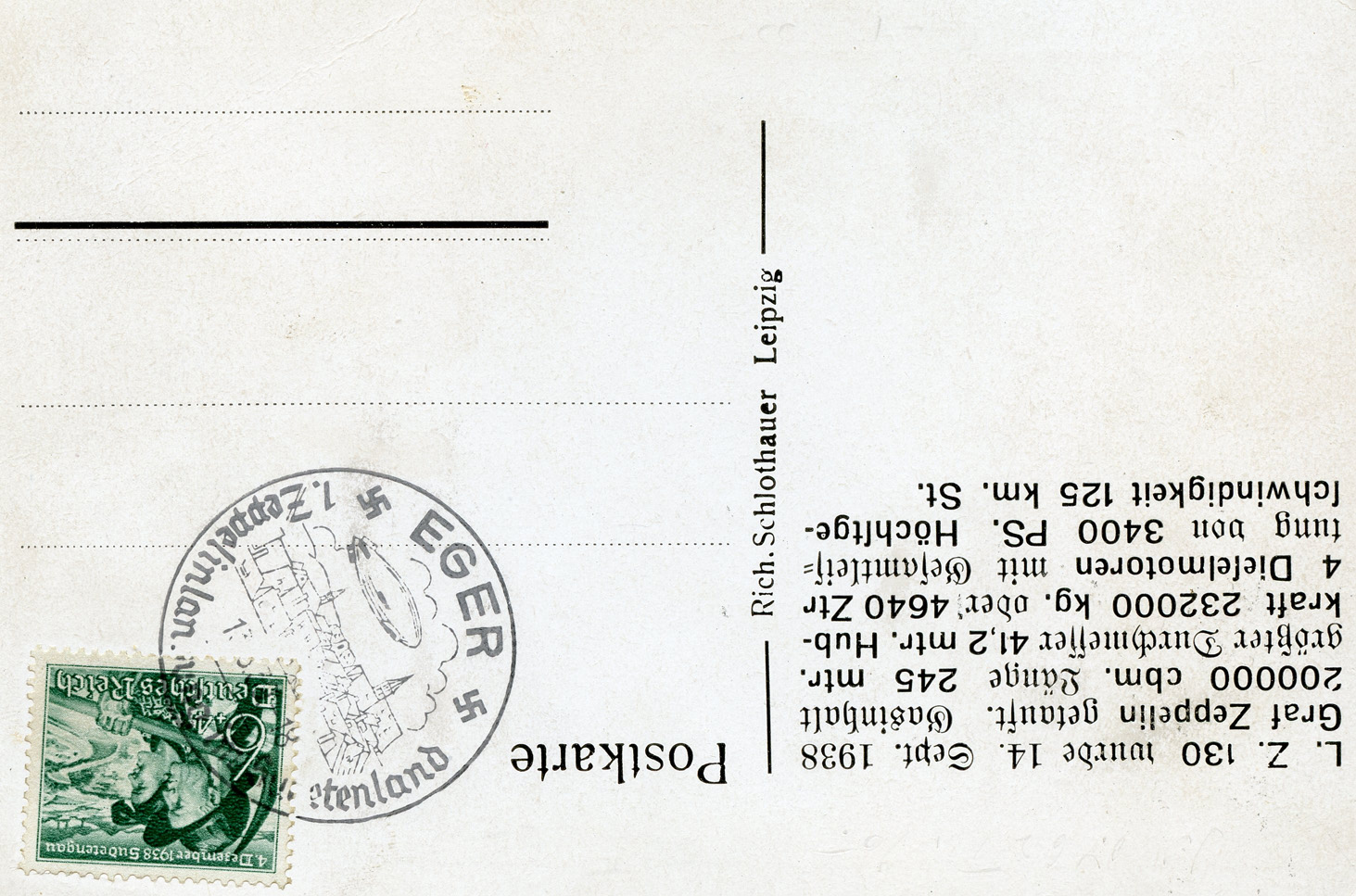
[Below: Close-up.]
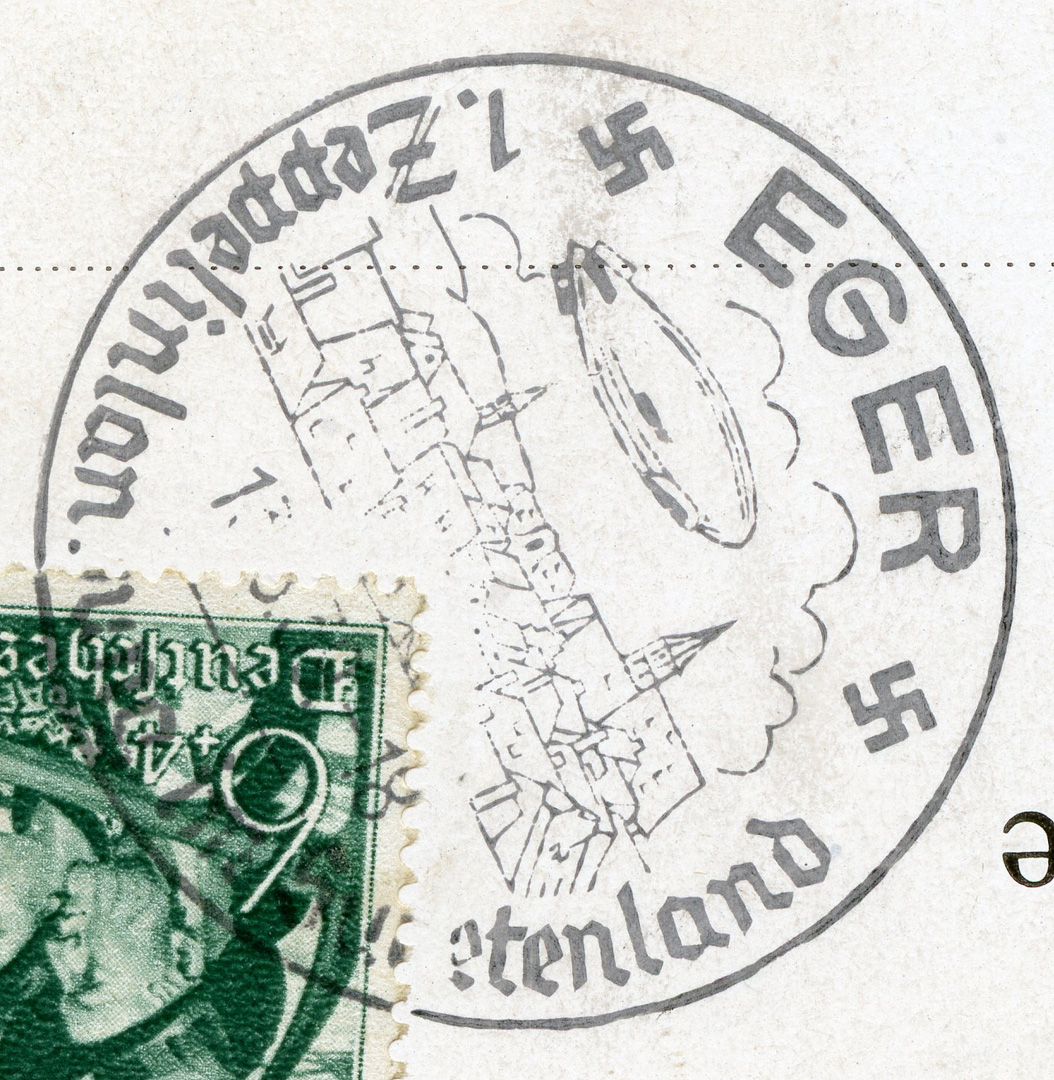

[Below: This Zeppelin postcard was postmarked on July 30, 1939.]
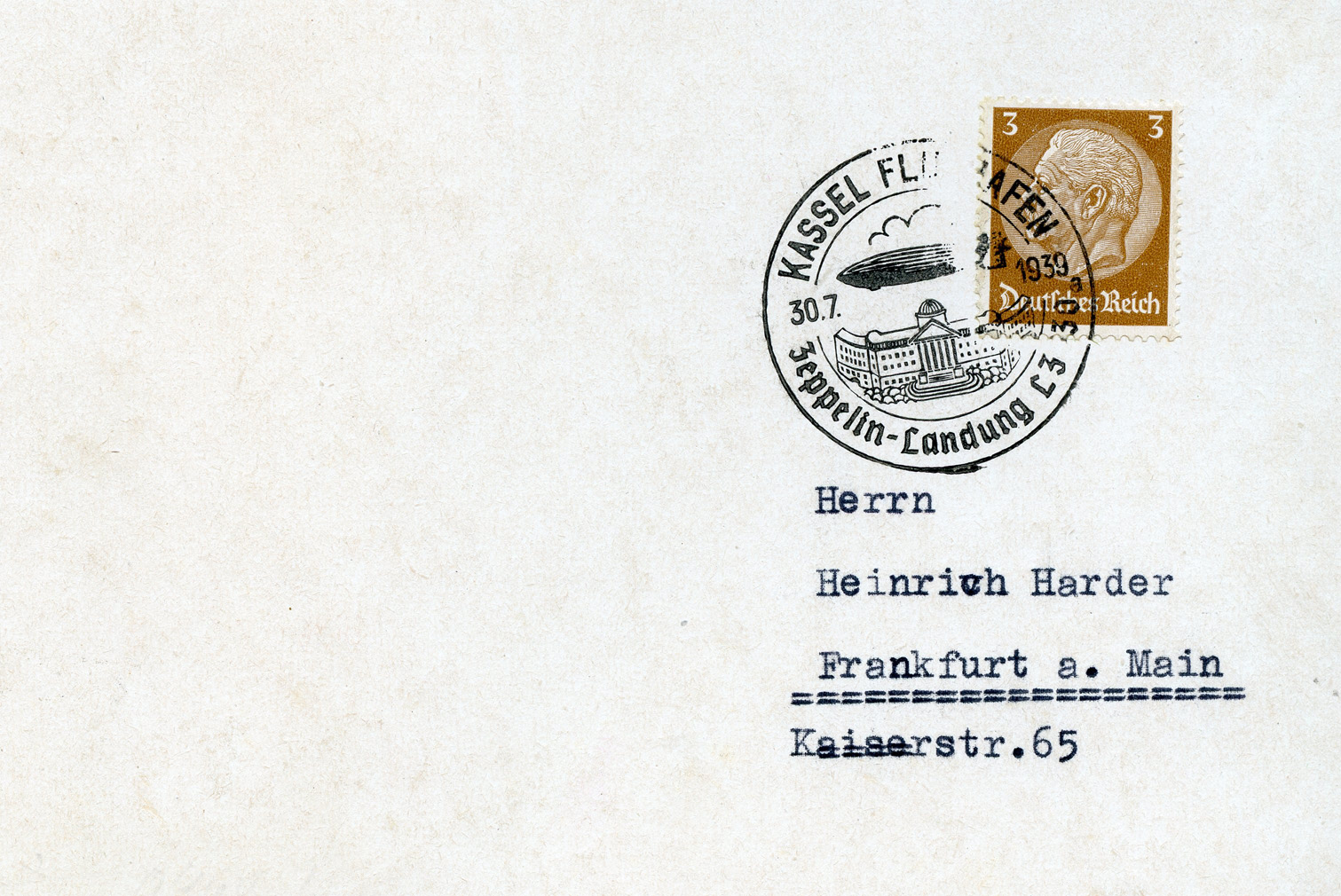
[Below: Close-up.]
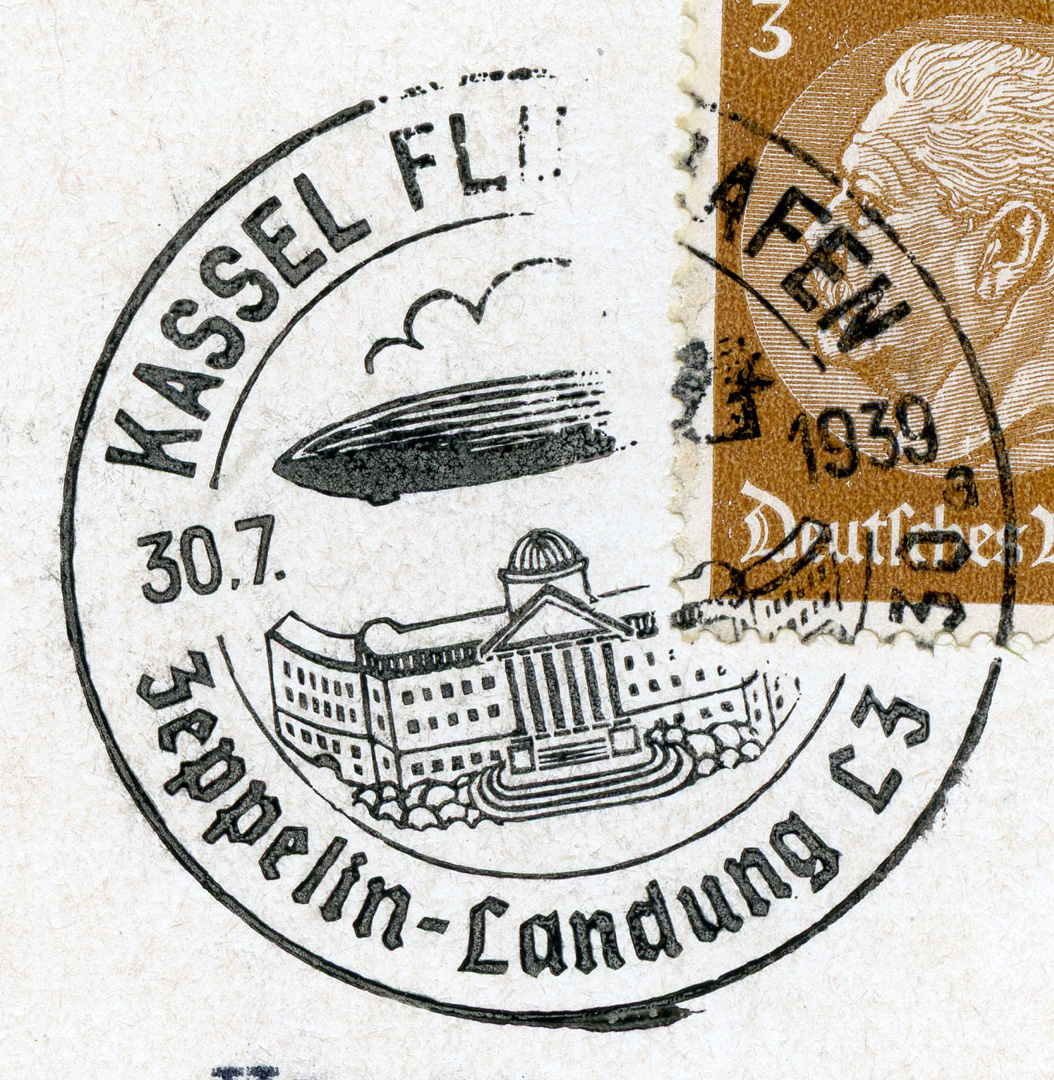

[Below: This Zeppelin postcard was postmarked on July 30, 1939.]
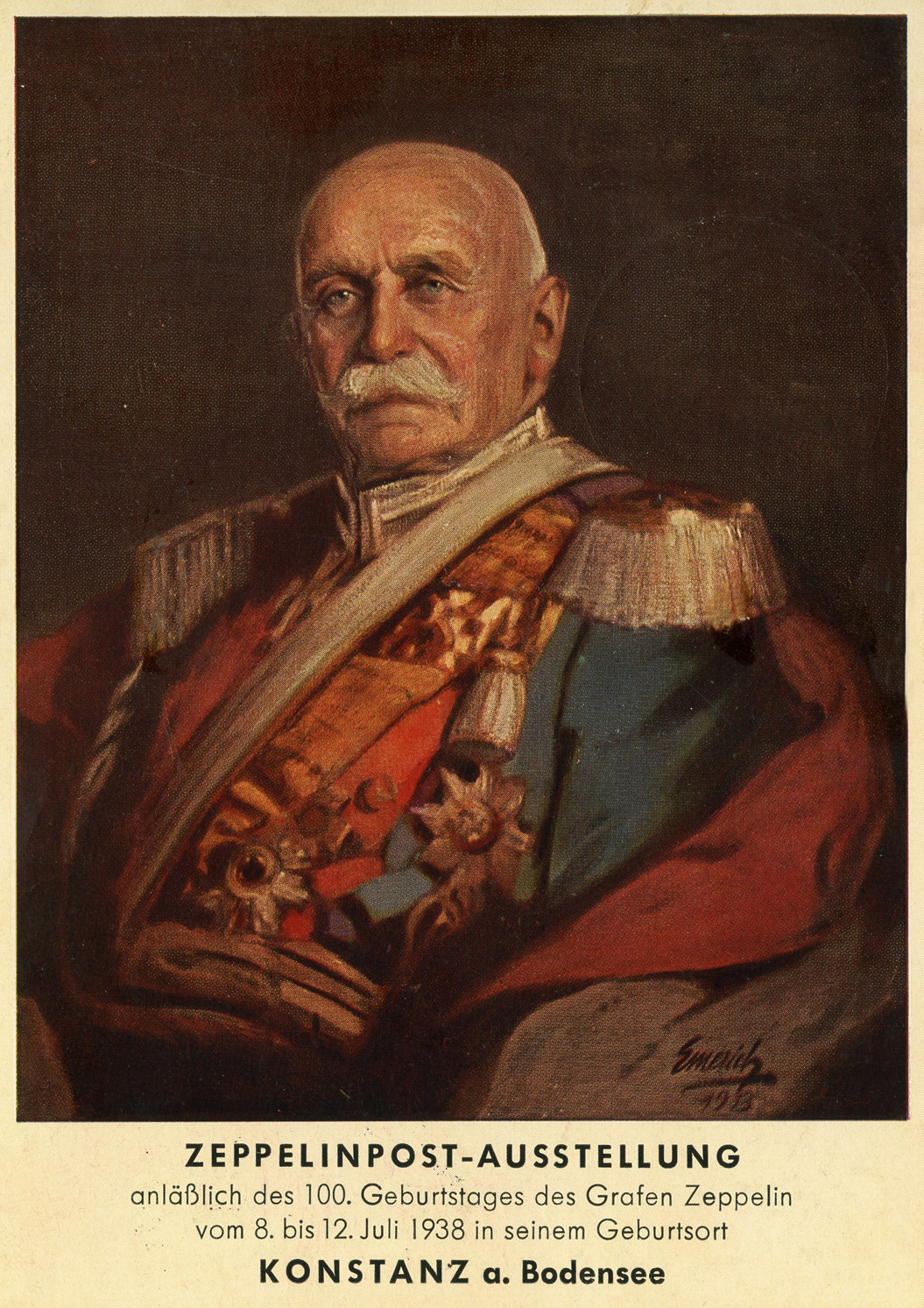
[Below: Close-up.]
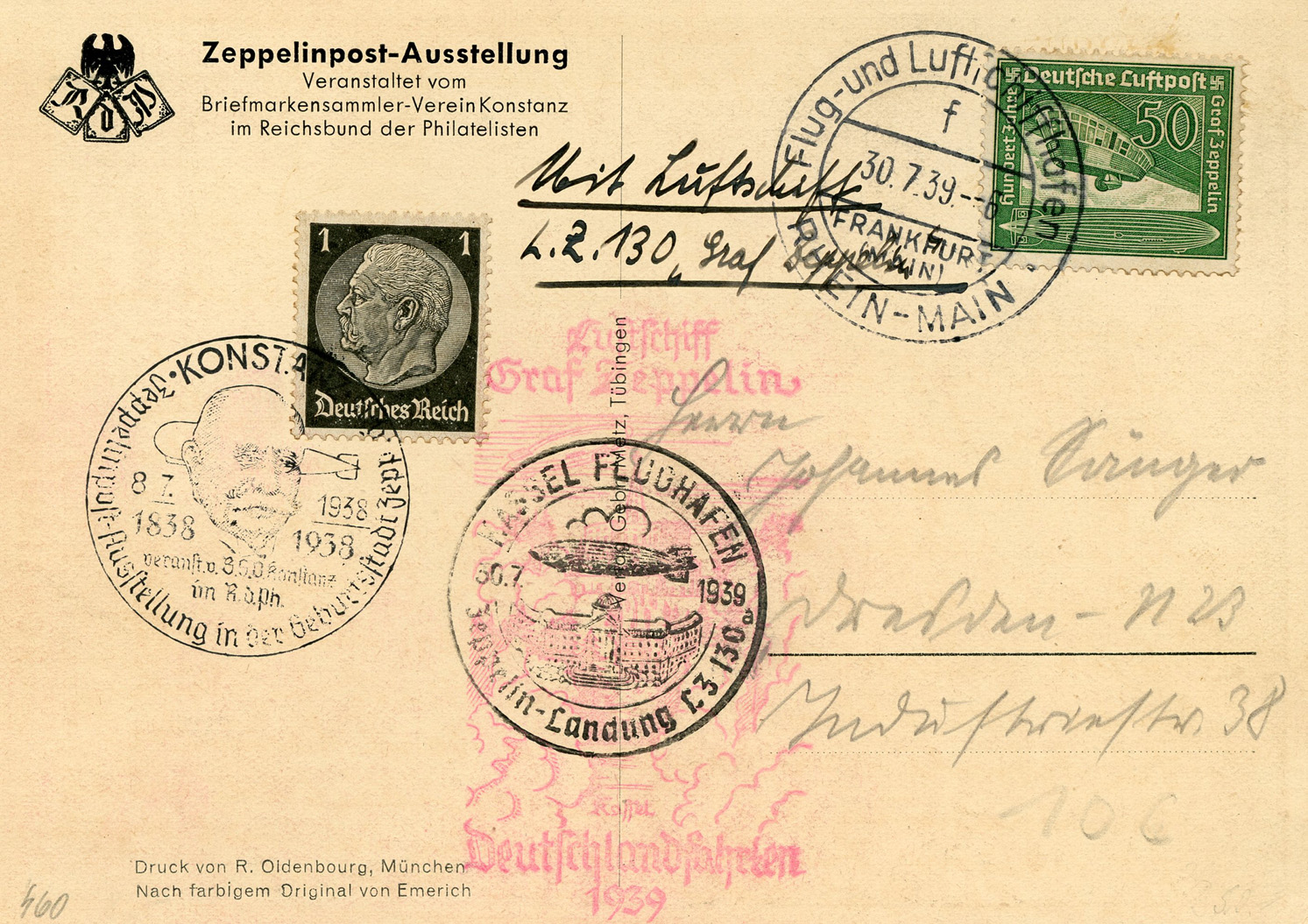
[Below: Close-up.]
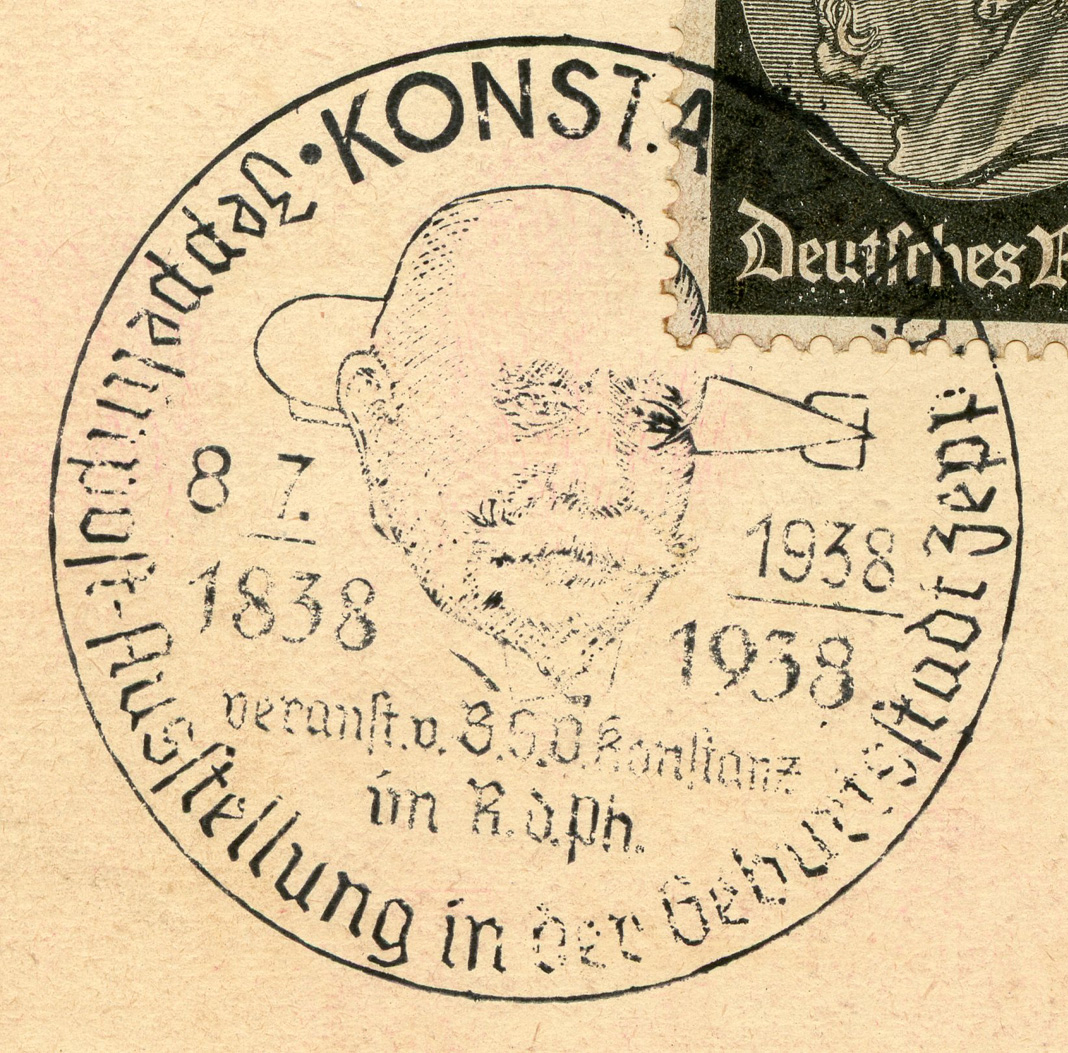
[Below: Close-up.]
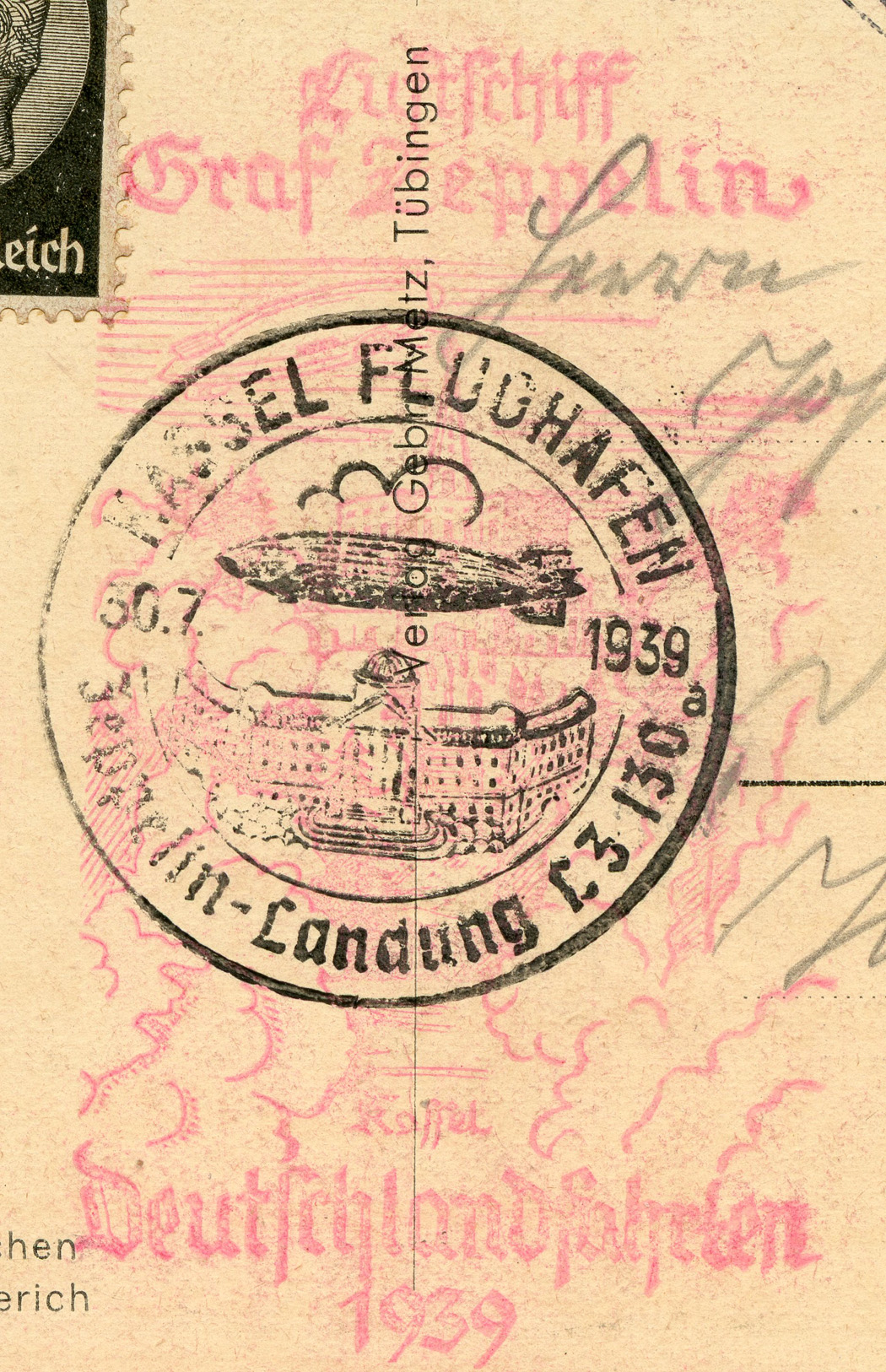

[Below: This Zeppelin postcard 'Die besten Wünsche zum Neuen Jahre' (Best wishes for the New Year). I like this one a lot, it has that old world charm.]
[Below: Reverse. This was canceled in Karlsruhe on New Year's Eve, December 31, 1934. This has a 'Deutsche ist die Saar' (The Saar is Germany) vignette.]
[Below: Close-up of Saar cancel.]

[Below: Now this one is cool. It says: 'Deutsche Luftfahrt - Nach Motiven deutscher Briefmarken' (German Aviation - Based on motifs of German stamps).]
[Below: Postcard reverse. It says: 'Olympia=Postwertzeichen=Austellung ' (Olympia=Postage stamp=Exhibition).]
[Below: Close-up of cancel. This is an interesting cancel that I've never seen before. It is from August 9, 1936.]

[Below: This has a mystery attached to it. But first, it was sent from Rochester, New York, postmarked on October 26, 1928, to Rheinland, Germany. It departed from the usual Zeppelin port at Lakehurst, New Jersey. The L.Z. 127 Zeppelin made its first flight only the month before. What's strange is this was damaged by water. Where did the water come from? It says it was damaged when they received it from the USA. Why are the stamps in English if it was received in Germany?]
[Below: Zeppelin stamp.]
[Below: 'Received in this condition from abroad' and 'Damaged by water' stamp.]
[Below: Reverse of envelope. It reached Friedrichshafen on November 1, 1928, a mere four days after it was sent.]

[Below: This SS-Feldpost card says:
'Das letzte widerstandsnest wird zermalmt'
(The last nest of resistance is crushed).]

[Below: Postcard reverse. This was sent from Majorenhof, Lettland (Latvia), on March 14, 1944. This is using some sort of shorthand, very odd.]


[Below: This is a rarely seen philatelic sheet that says 'Helden-Gedenktag 1944' (Heroes' Memorial Day 1944). It has the complete set of stamps honoring the different branches of Germany's military.]

[Below: Close-up.]

[Below: Here's a rather strange modification. They took the '4' from a 1943 sheet and glued it over the '3'. So they destroyed another sheet to do this, I suppose. Odd.]

[Below: Here is the 1943 version without the pasted '4'.]


[Below: This is an interesting airmail envelope from July 1936 that was sent/canceled on a train. You can always spot the train cancel by the words 'Bahnpost' (which translates into rail mail). But you can spot a train cancel even easier than this because it is always an oval cancel. But anyway, this is the first time I've seen an airmail envelope that was on a train, kinda defeats the purpose of 'airmail' speedy delivery.]


[Below: Here's a neat looking postcard from the central German city of Fulda (a town in Hesse, located on the river Fulda). It was sent on December 15, 1943 and says:
'Der schwarze Walfisch'
(The Black Whale).
This is apparently a 'gentlemen's society' that celebrated 125 years (1869-1994) in the early 1990s. I wonder if it is still around?]

[Below: Reverse.]


[Below: Beautiful WHW (Winterhilfswerk des Deutschen Volkes, or Winter Relief of the German People) envelopes. The first one was canceled on February 28, 1937. The cancel advertises an international automobile and motorcycle show.]

[Below: Stamp close-up.]

[Below: Eagle close-up.]

[Below: Second WHW envelope, this one canceled on November 26, 1938.]

[Below: Eagle close-up.]


[Below: Here is a postcard from Bremen sent on March 7, 1933 which features a rare SA donation stamp (it says 'Hilf auch du' {You too can help}). It was sent to Frau Major A. Quedenfeldt. It's too time-consuming for me to try and translate this, maybe a German would help us? I for one would appreciate any effort! From what I can read it looks to have an interesting message and is only a little over a month into Adolf Hitler's appointment as chancellor on January 30, 1933.]

[Below: Stamp close-up.]

[Below: Postcard reverse.]


[Below: Wow, this is neat. Here is another early NSDAP item. It was postmarked on April 4, 1933, only a few months into Adolf Hitler's appointment as chancellor on January 30, 1933. It still uses the old Imperial German postage stamp. It says: 'Herr Mach Uns Frei' (Lord Set Us Free). On the bottom of the postcard is the old National Socialist saying: 'Und ihr habt doch gesiegt' (And Despite All You Were Victorious).]
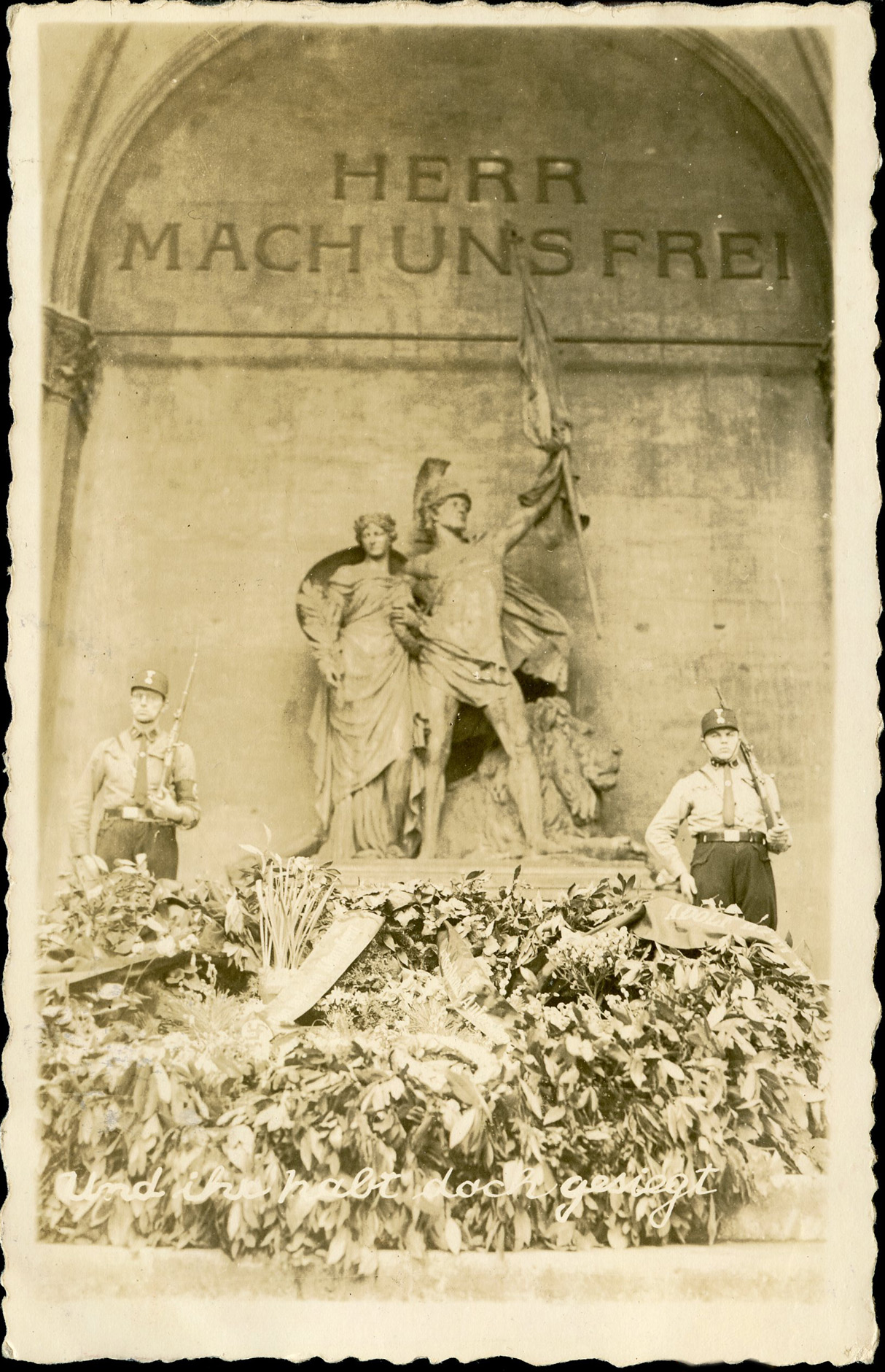
[Below: Postcard reverse.]
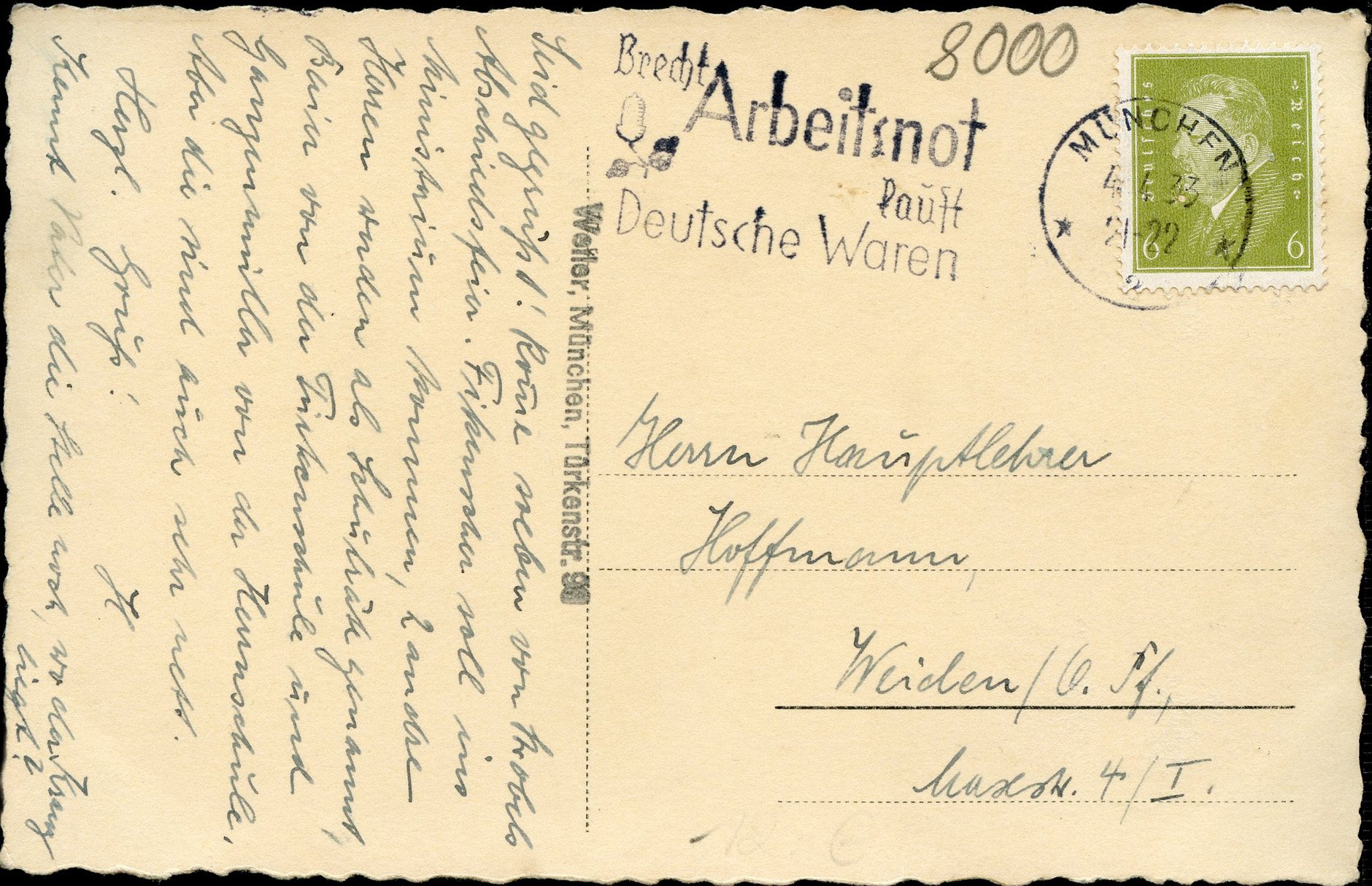

[Below: Another early NSDAP postcard. Let's move on to the reverse. Click to enlarge.]
[Below: Postcard reverse. First let's look at the words in the upper left hand corner. 'LOBEDA' is a former independent city in Thuringia, Germany. 'Jugendherberge' was a youth hostel. This was canceled in Lobeda on September 9, 1930. Now to the awesome eagle vignette stamp. It says 'Ins Dritte Reich! National Sozialisten' (To the Third Reich! National Socialists). Click to enlarge.]
[Below: Close-up. Click to enlarge.]

[Below: A very neat early NSDAP postcard. Let's look at the back to learn more. Click to enlarge.]
[Below: This was postmarked on October 23, 1932. Neuruppin is a town in Brandenburg, Germany. I wish I could read this old German script... Postcard reverse. Click to enlarge.]

[Below: Another cool one. This says 'Gruß aus Bad Reichenhall' (Greetings from Bad Reichenhall). Bad Reichenhall is in the Berchtesgaden Land district in Upper Bavaria, Germany. Click to enlarge.]
[Below: Close-up. Click to enlarge.]
[Below: This was postmarked on October 1, 1936. This shows a cable car going up the mountain... I remember my first trip in a cable car up the Rocky Mountains in Colorado. What an experience! Click to enlarge.]

[Below: This is an older postcard from 1933 celebrating Adolf Hitler's win as Germany's Reichschancellor. National Socialist postcards before Hitler came to power are relatively uncommon.]
[Below: Note that this postcard has a Weimar era postage stamp. 99% of the postcards you'll find of Adolf Hitler will have National Socialist produced postage stamps from after he came to power. He became Reichschancellor on January 30, 1933 and this dates April 18, 1933, so this was just under three months into his leadership.]

